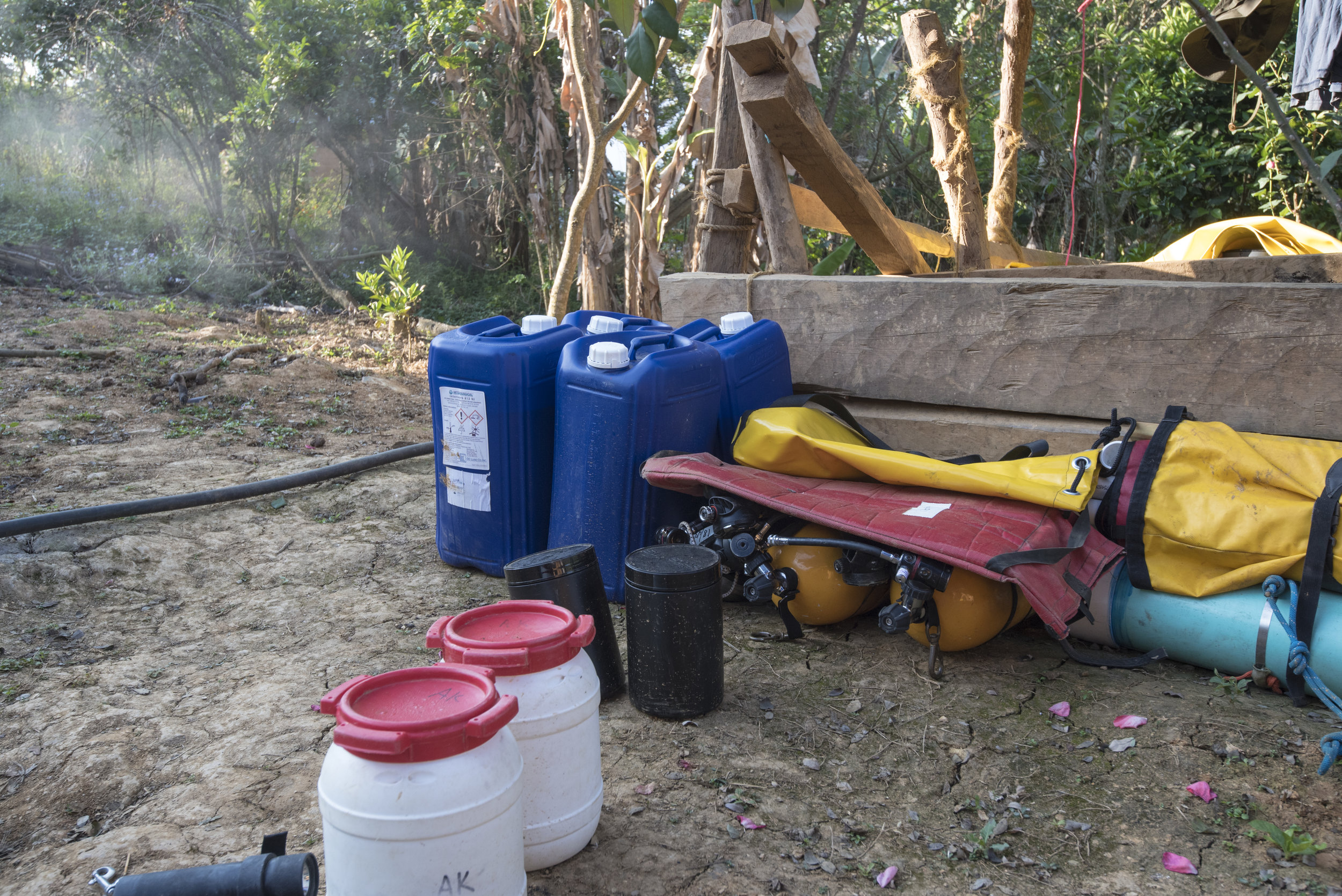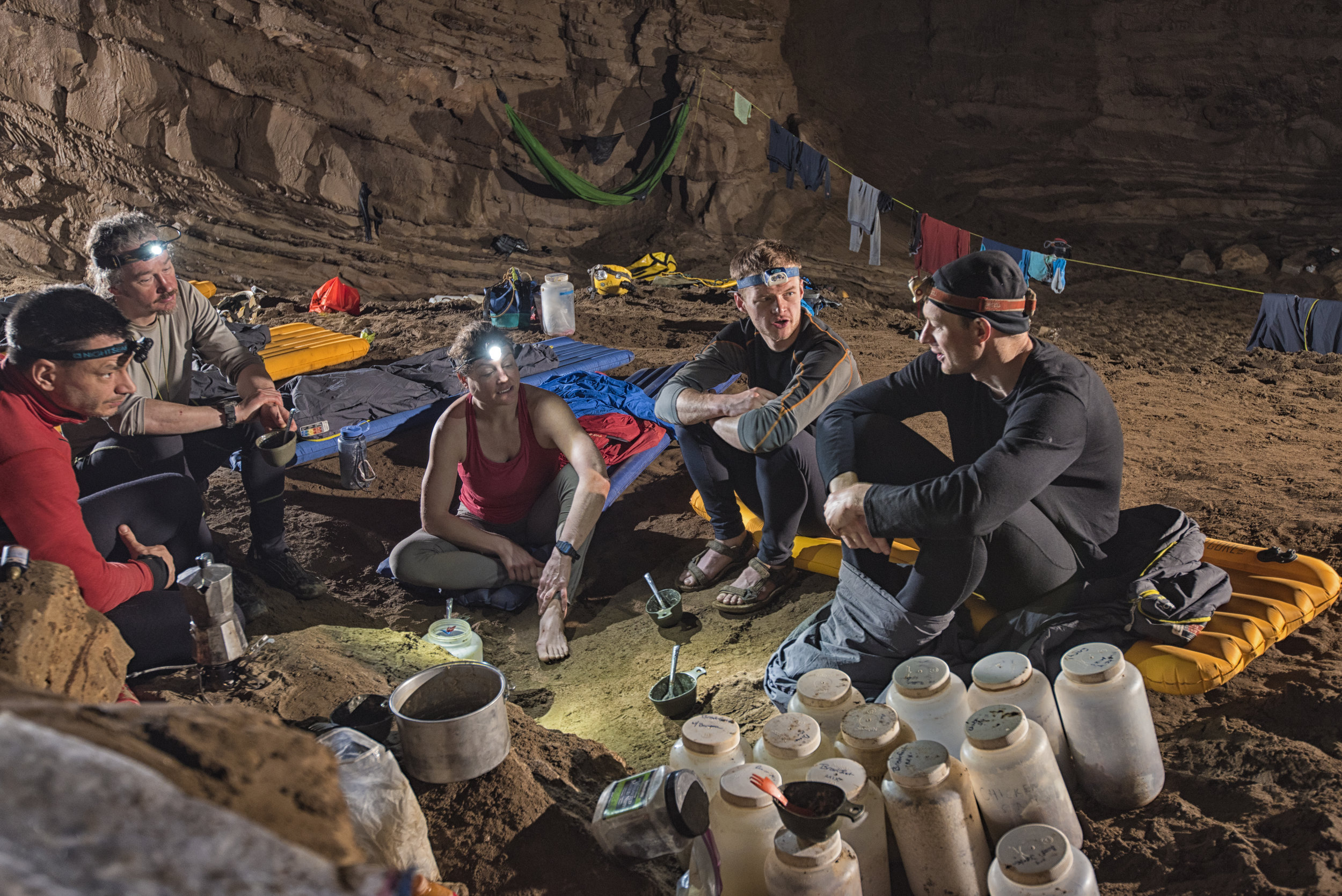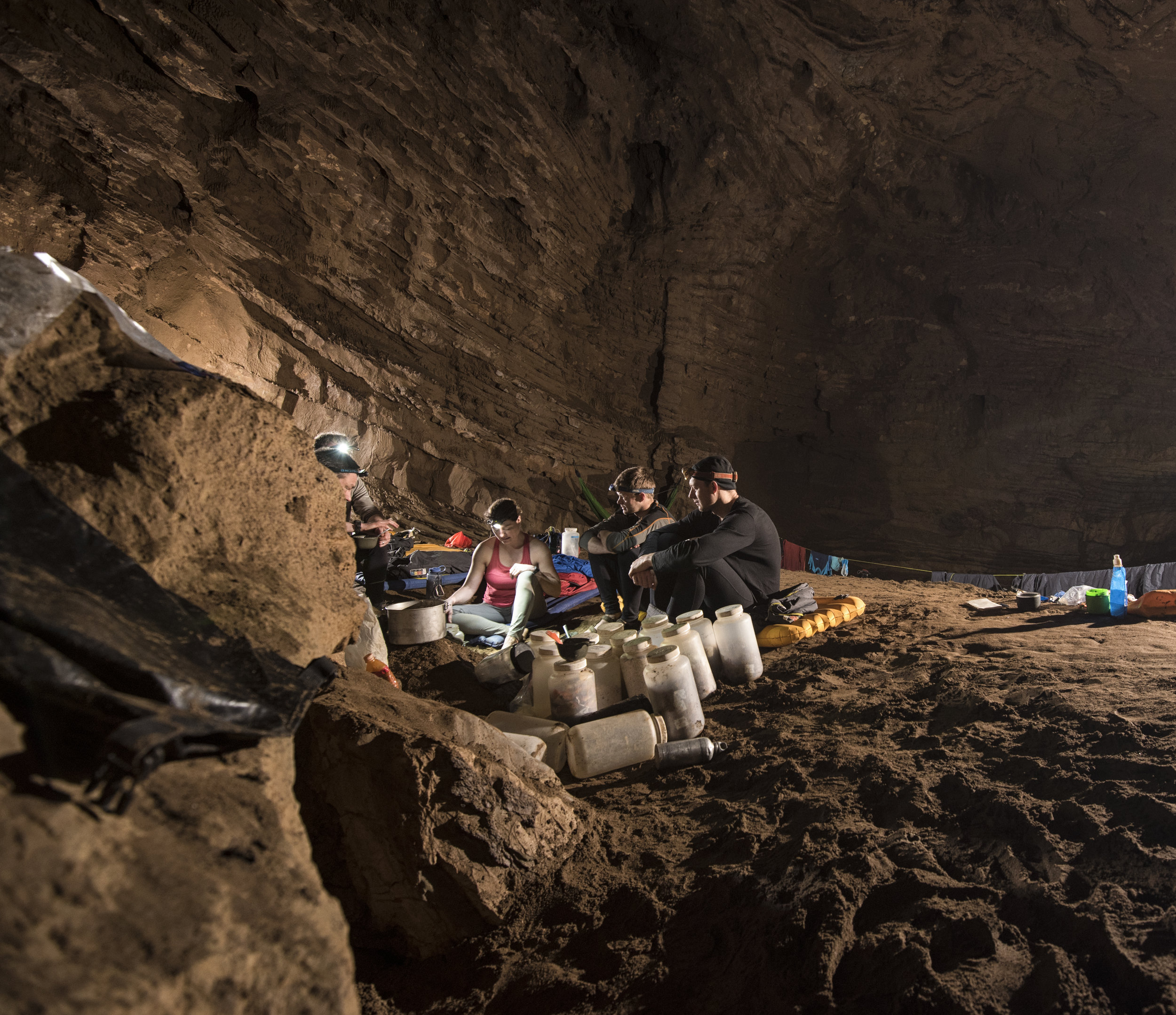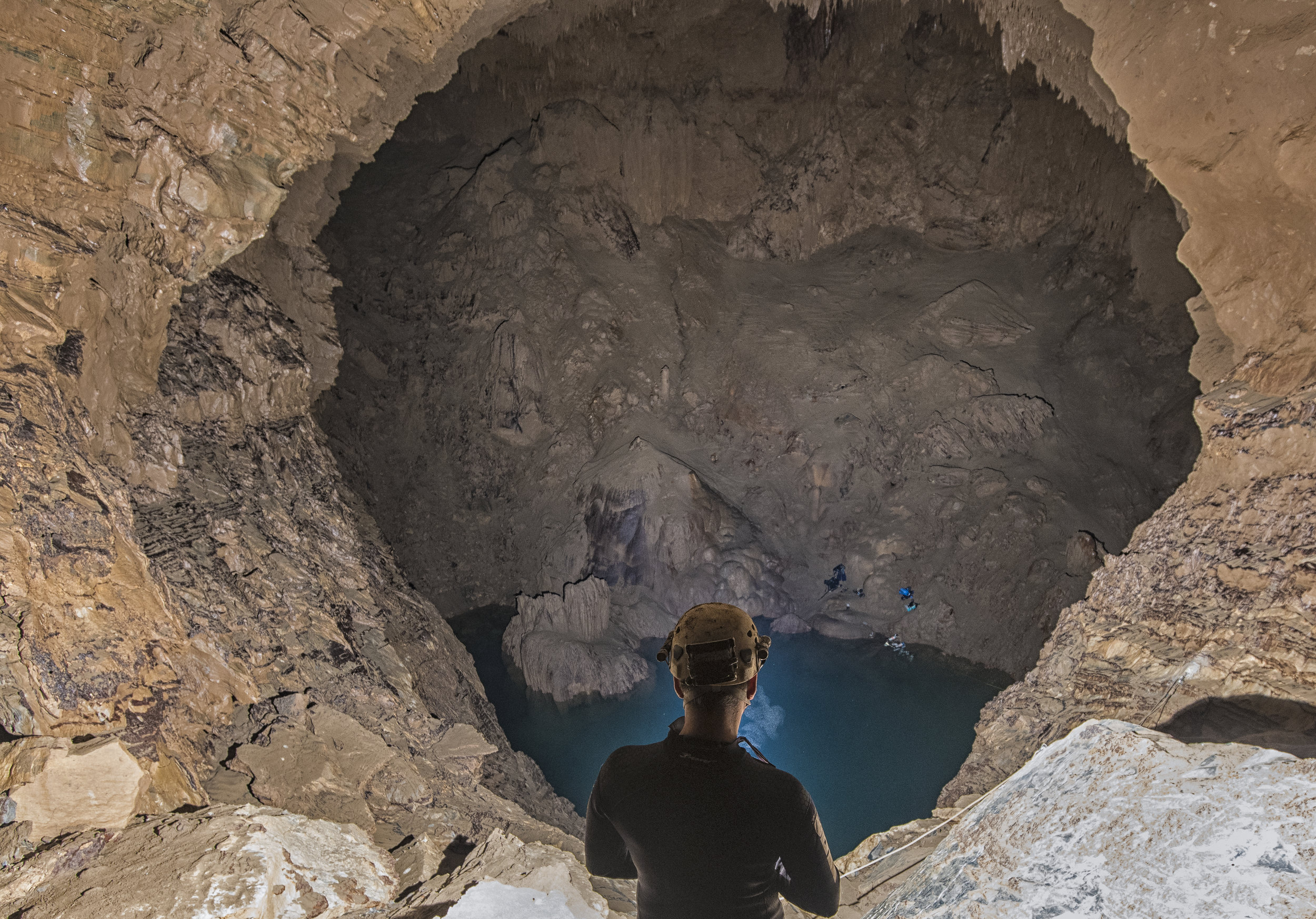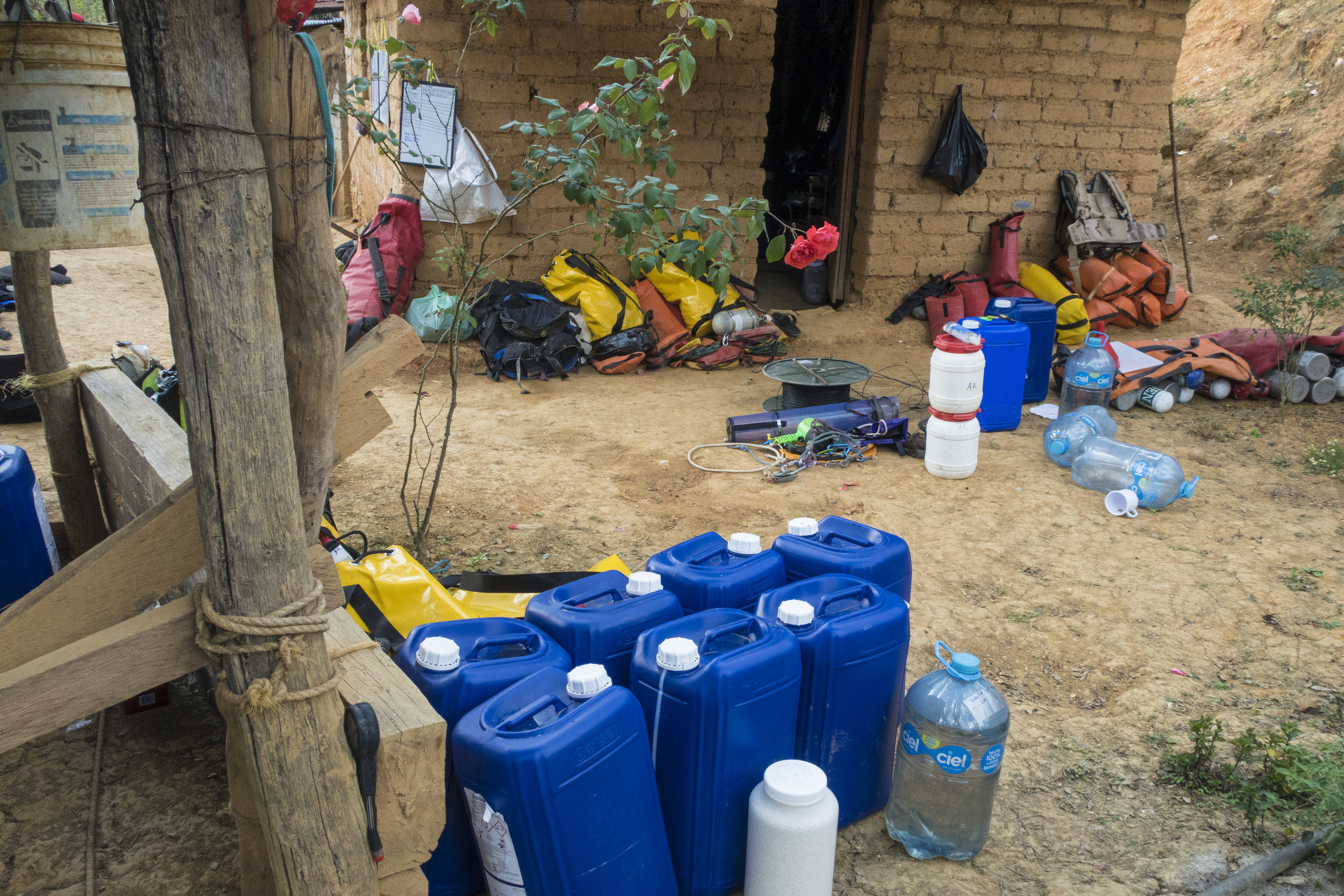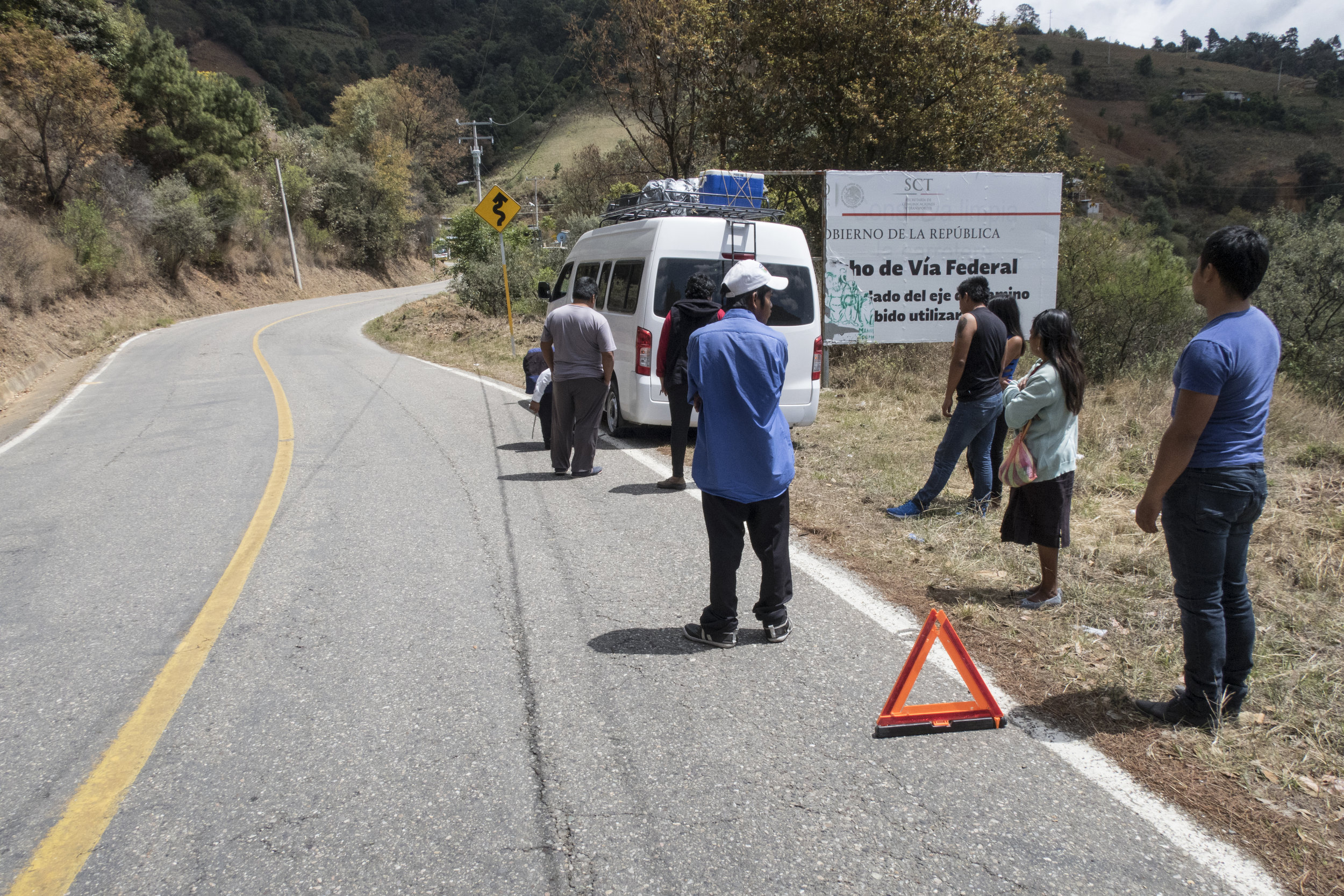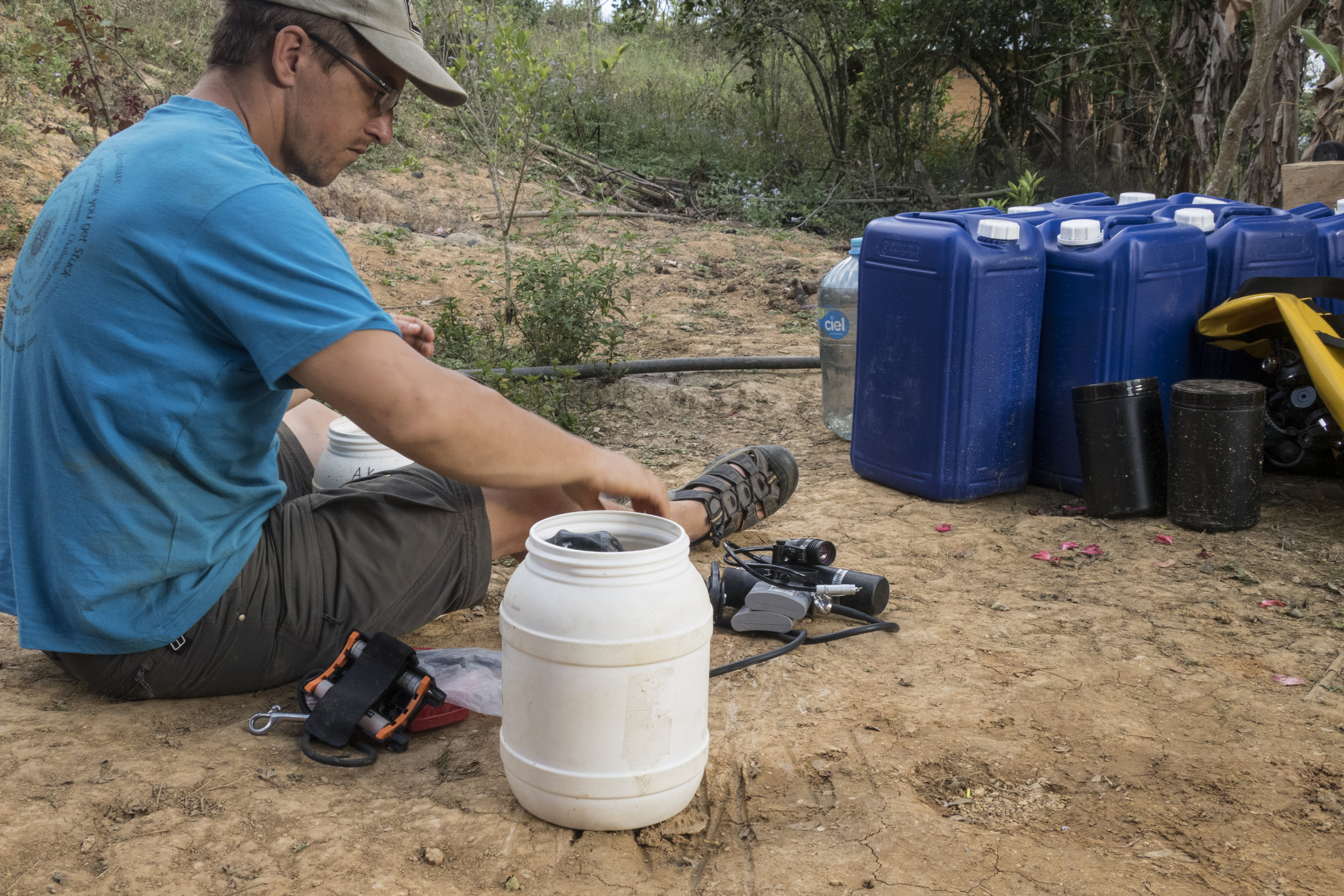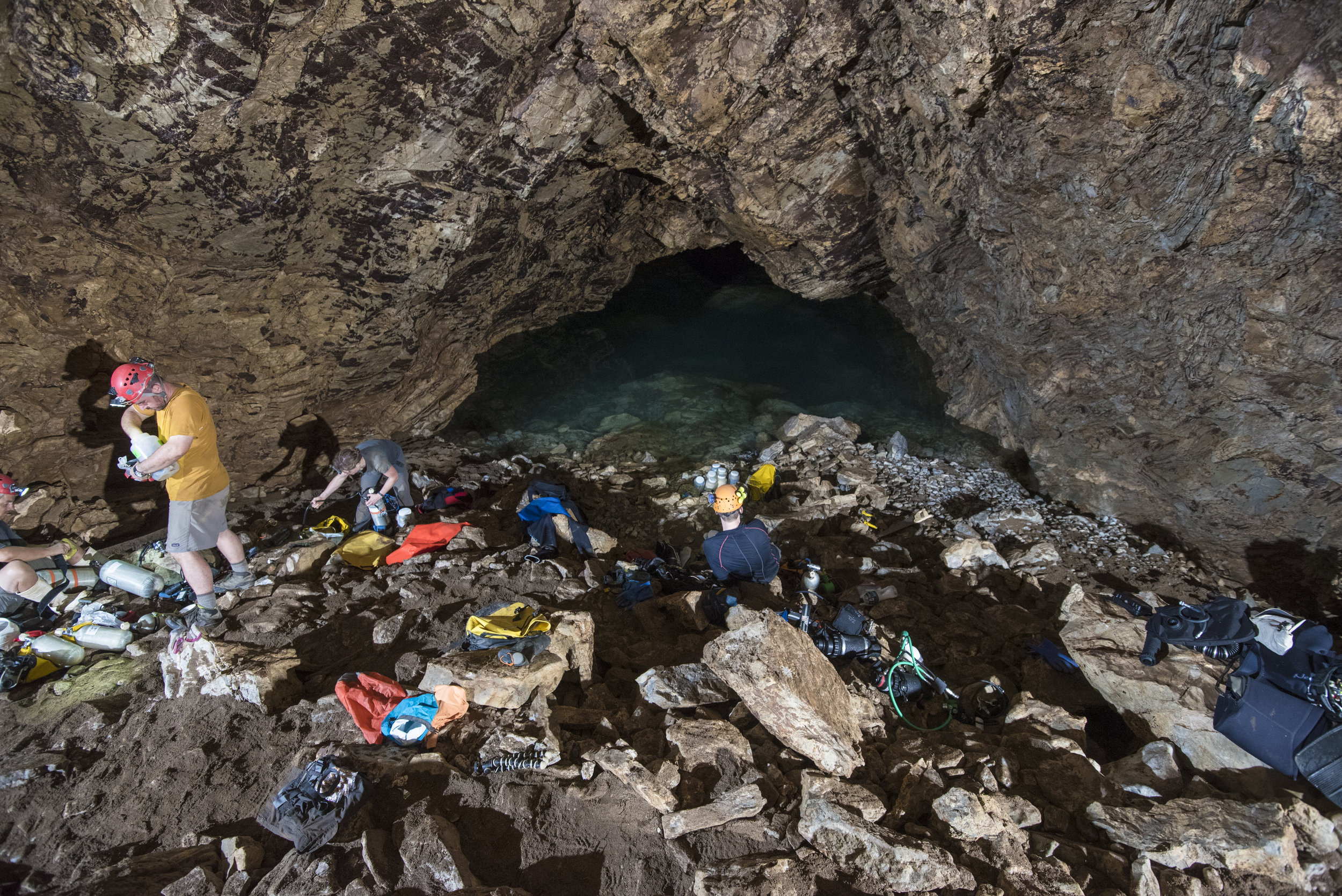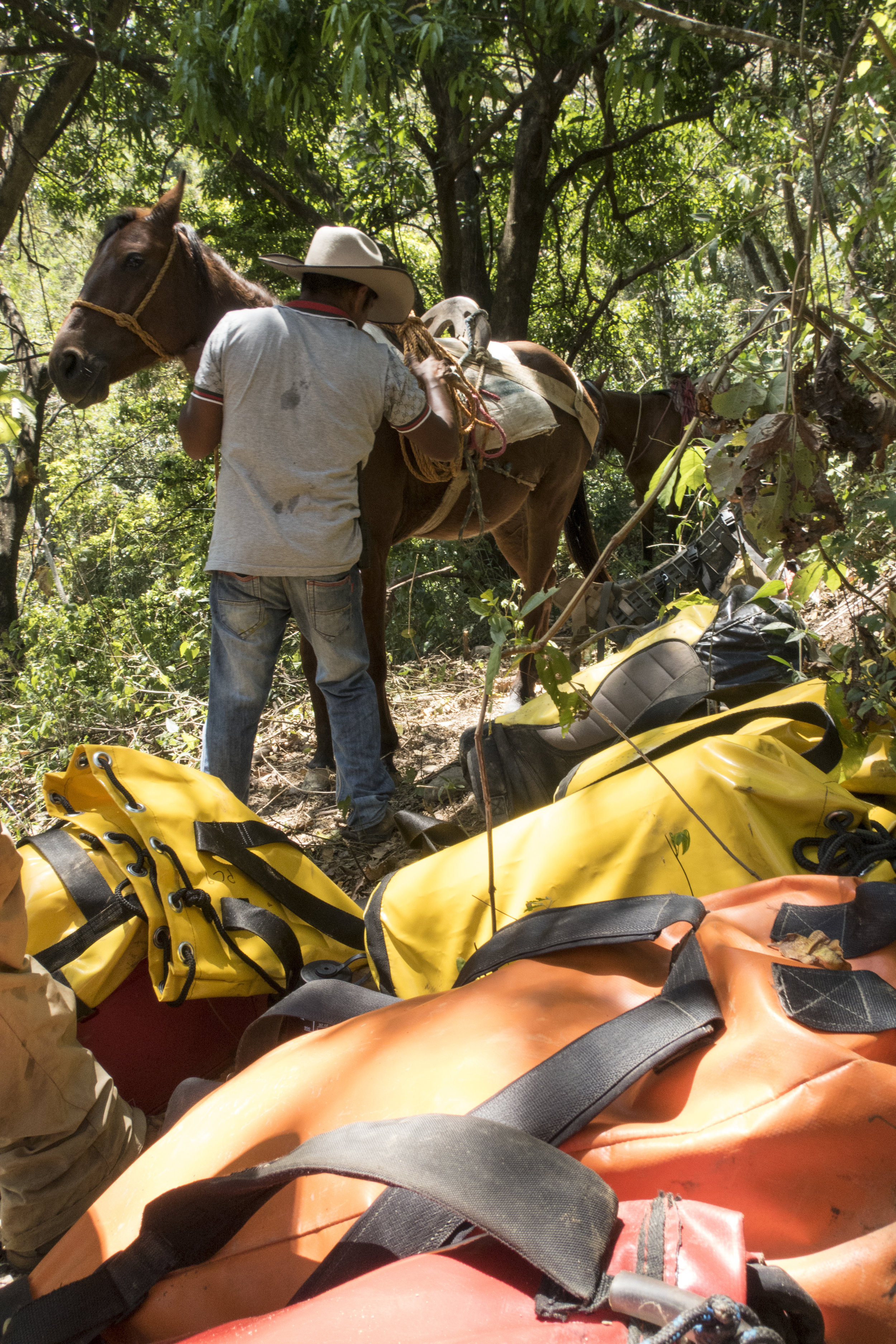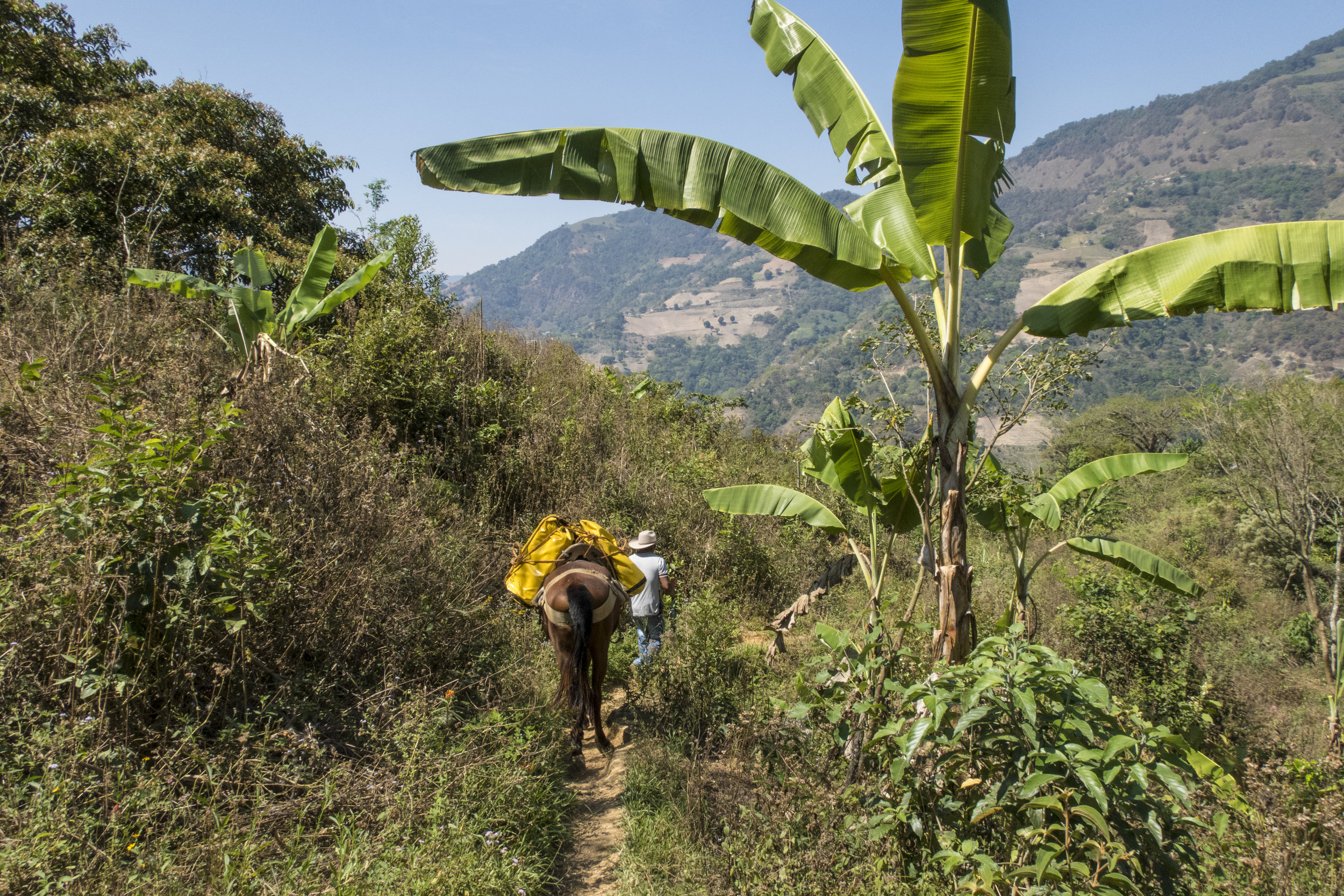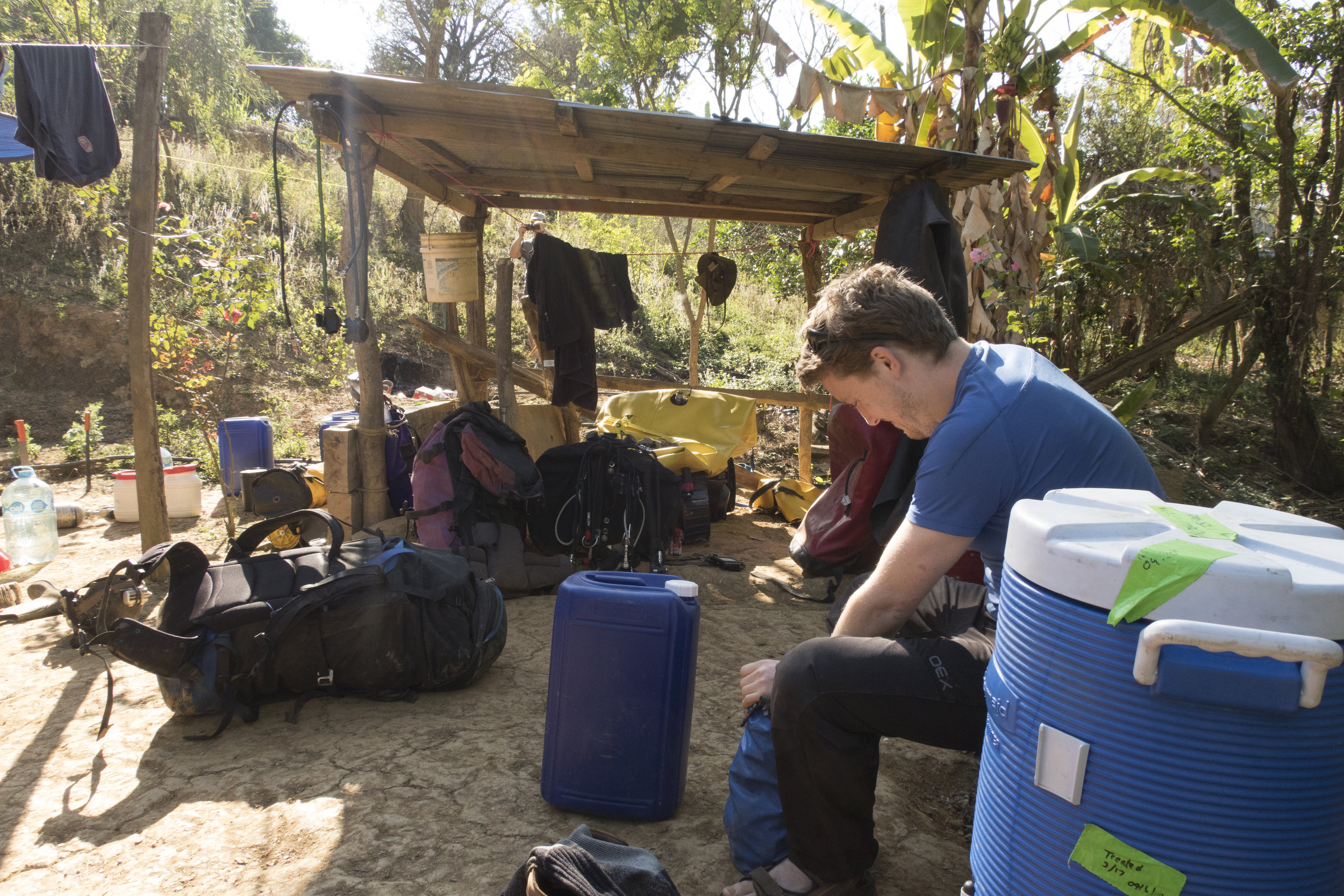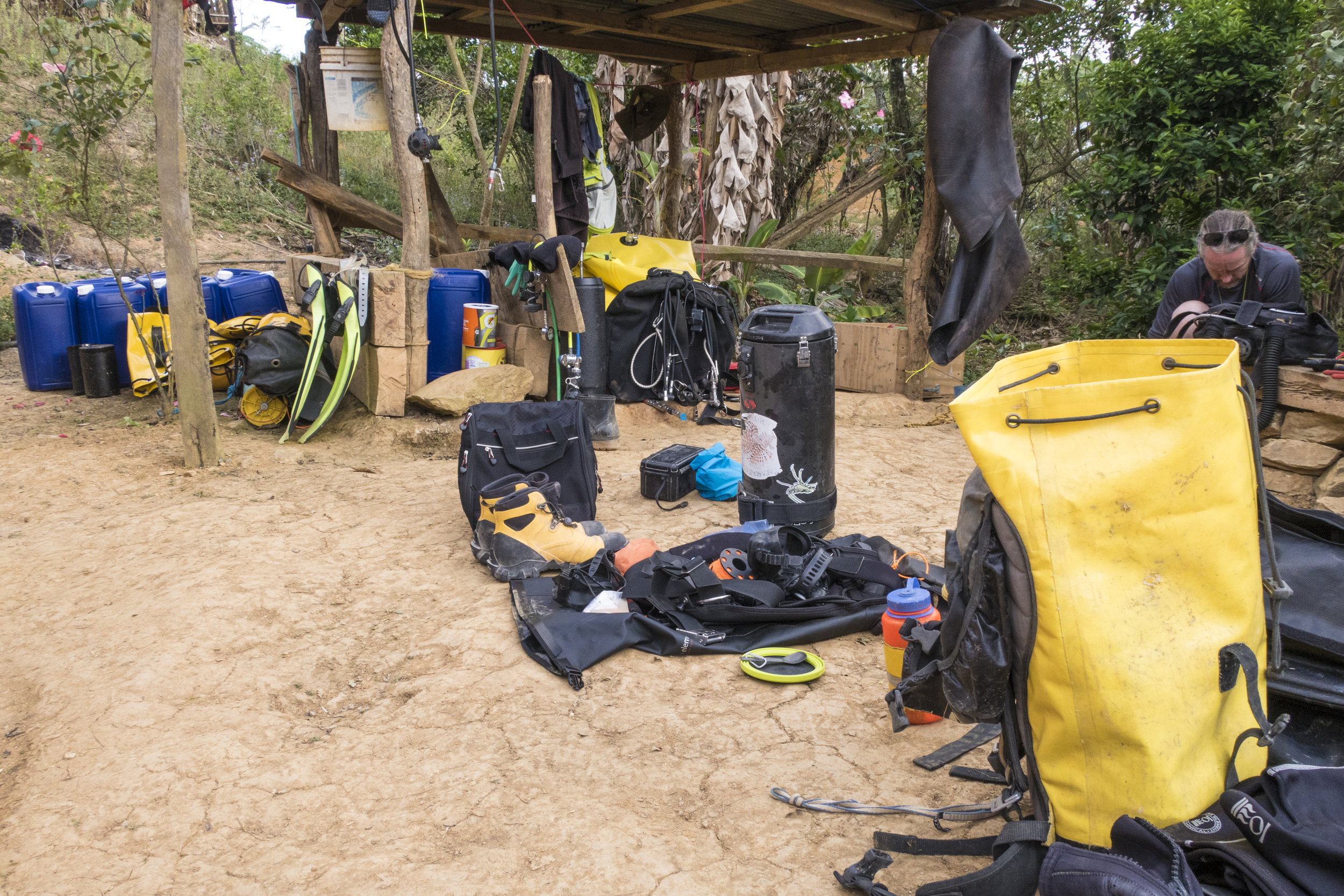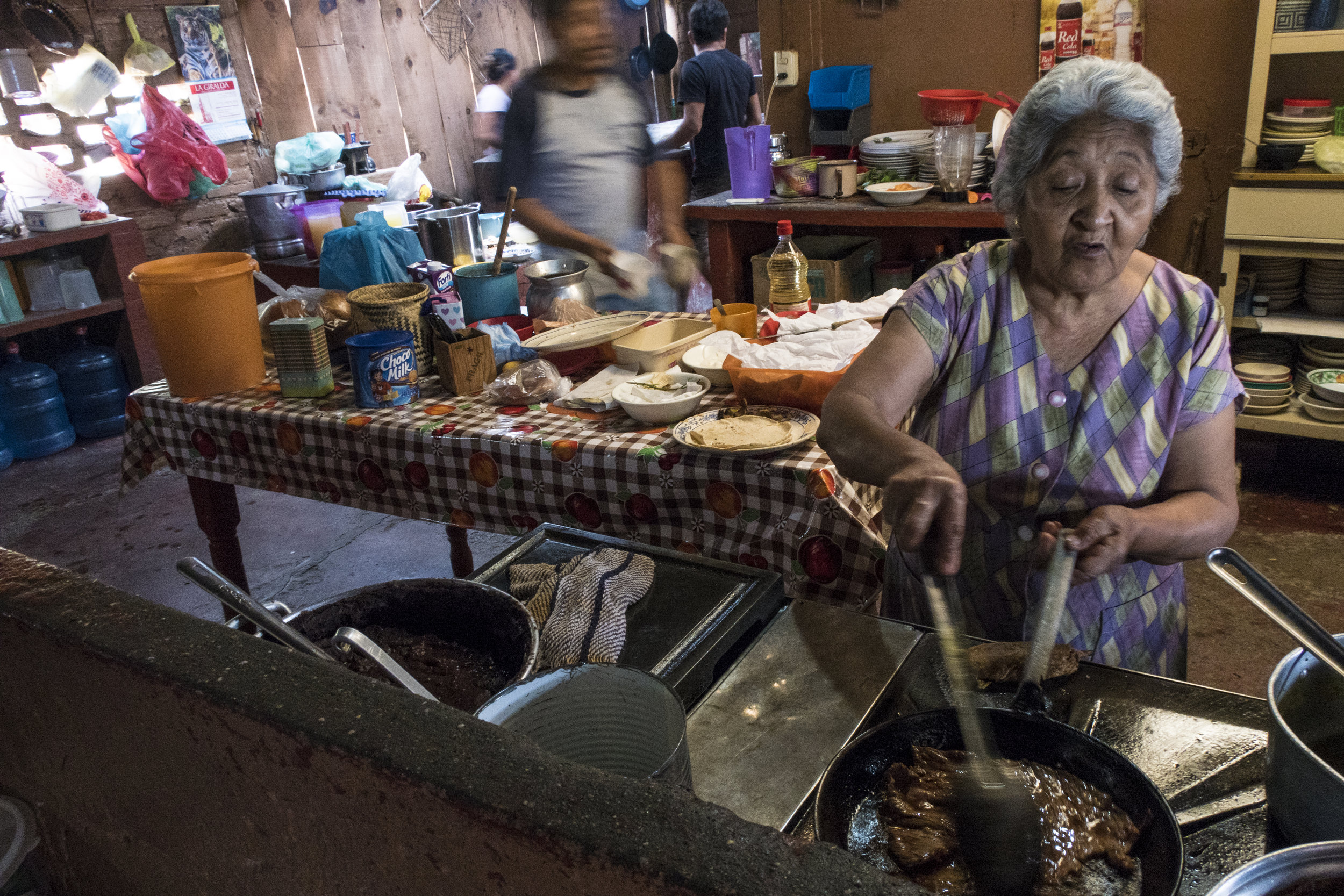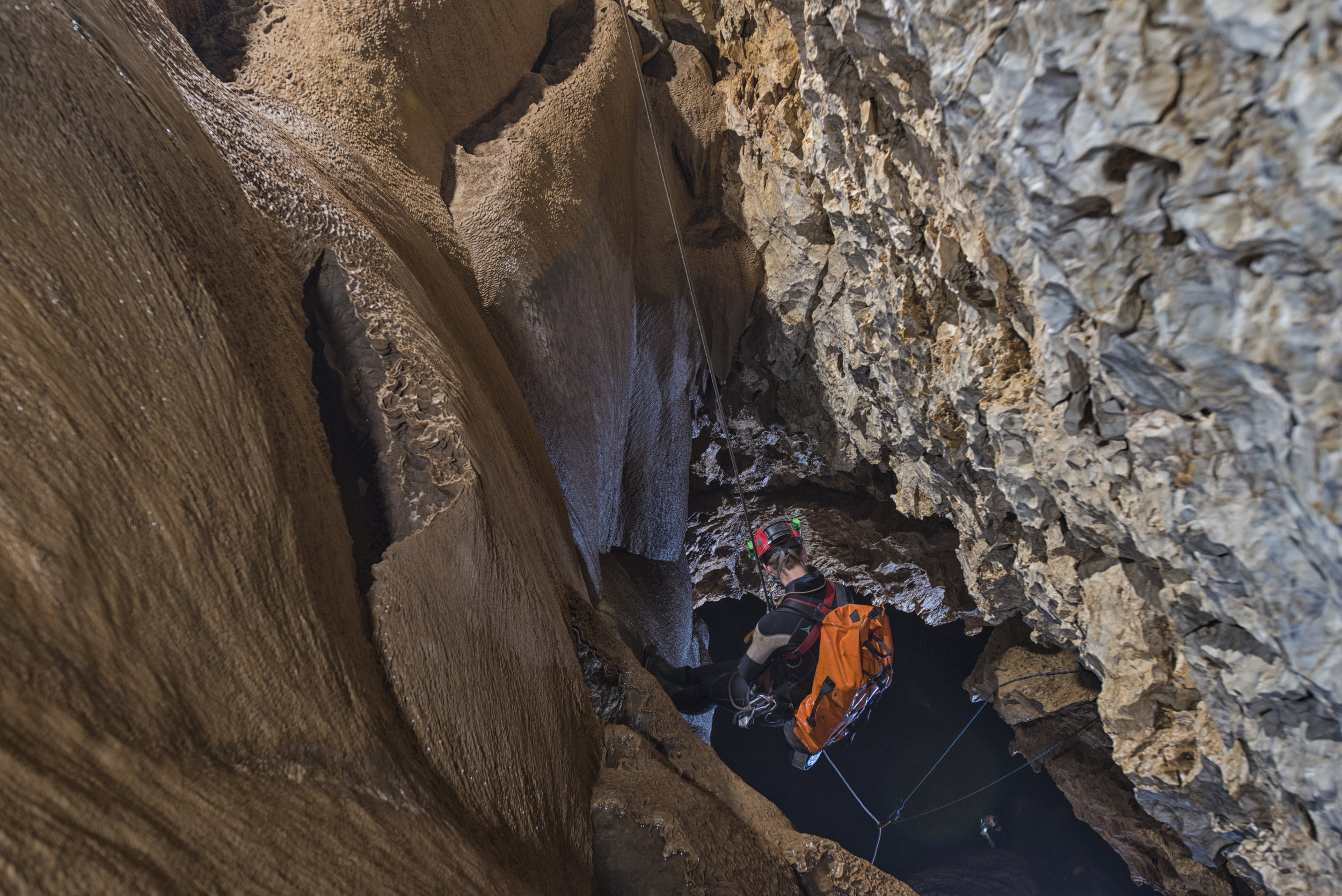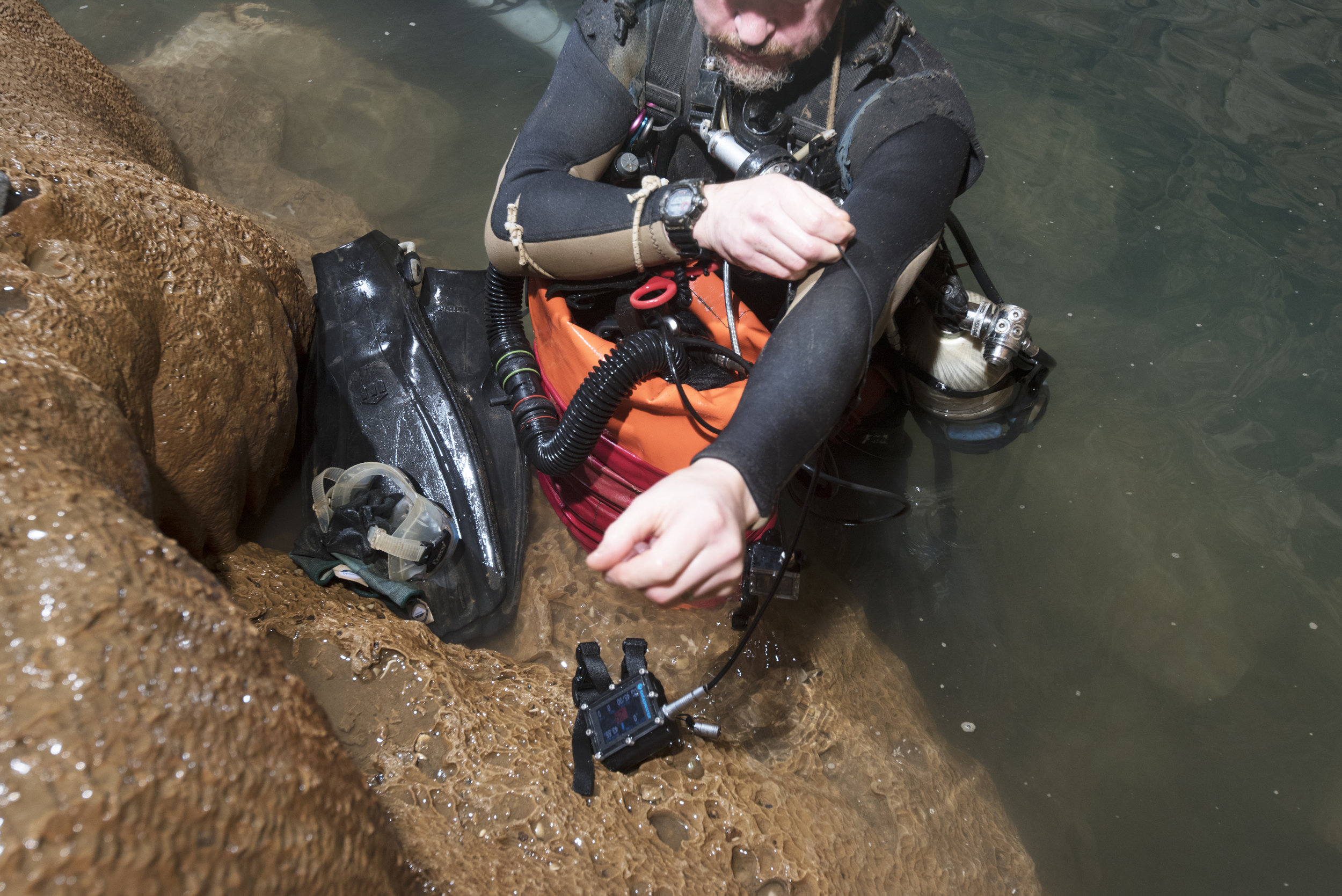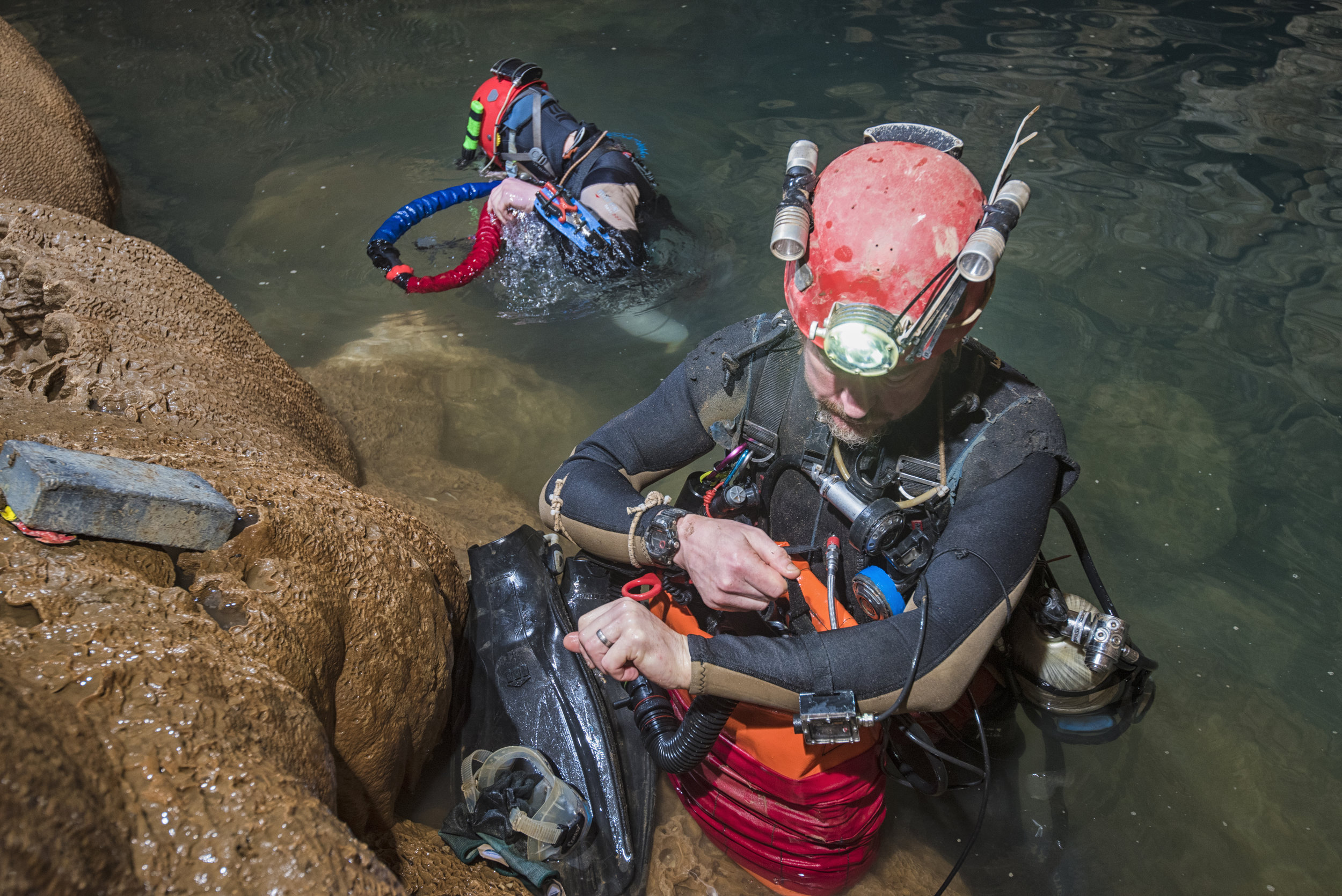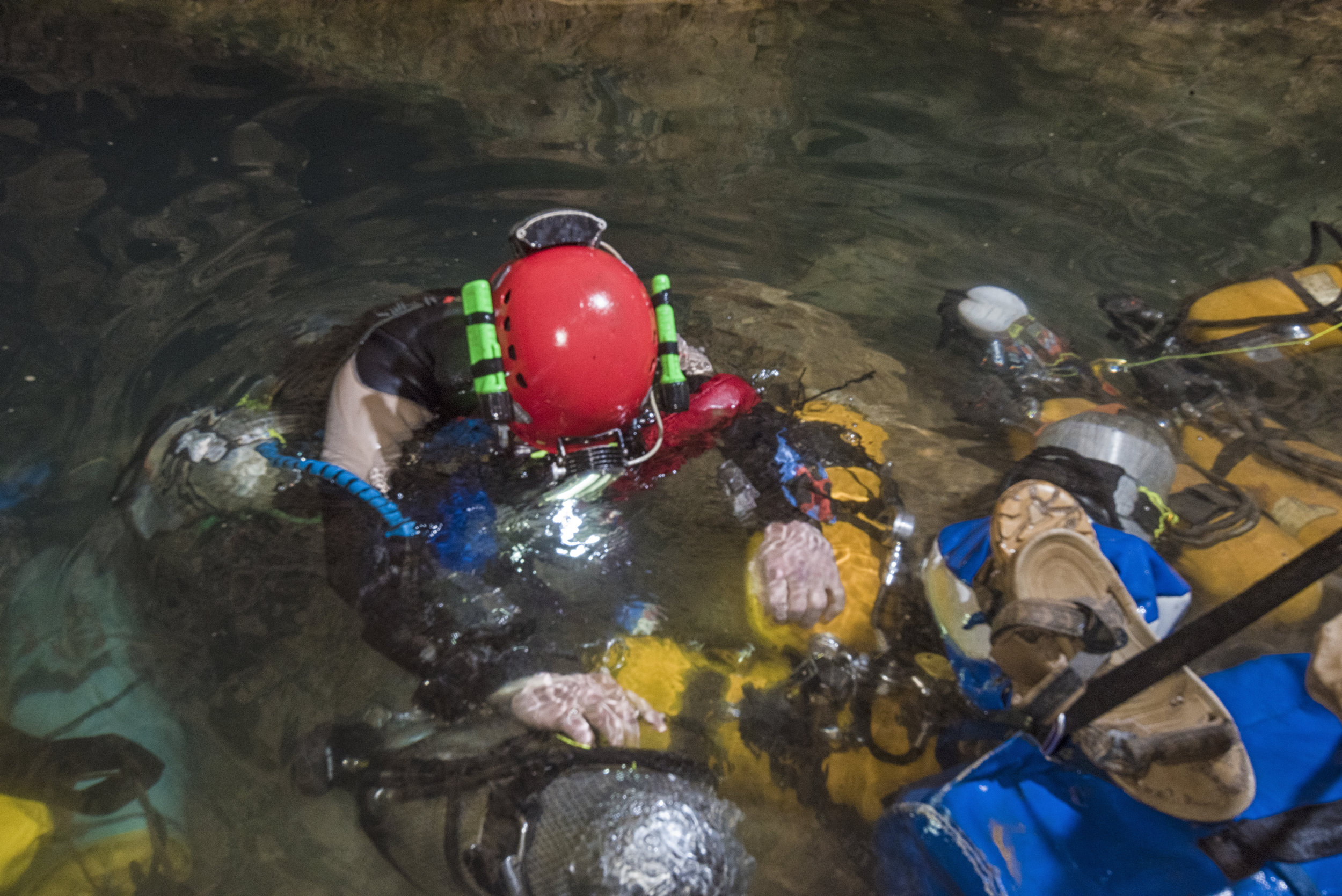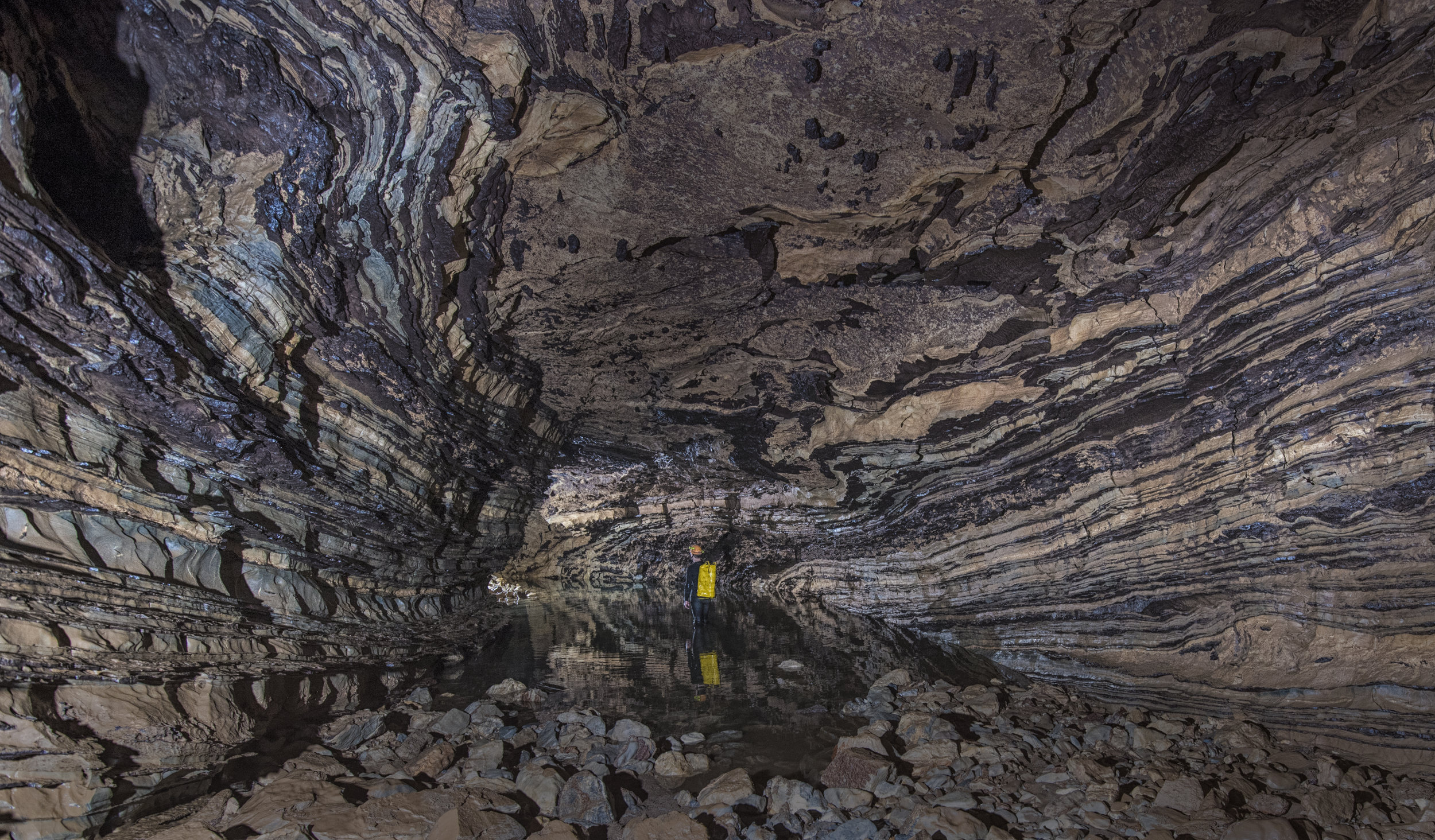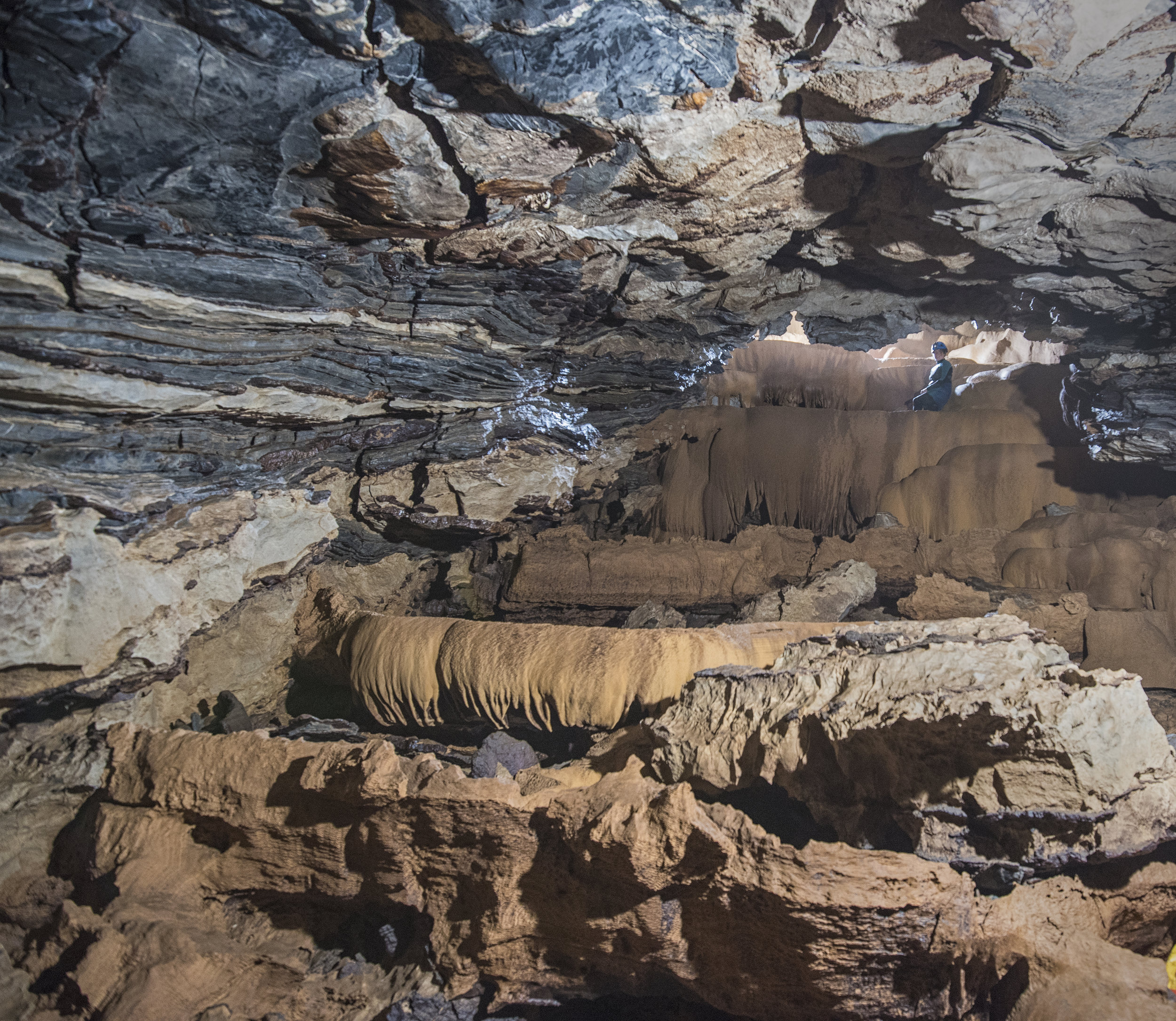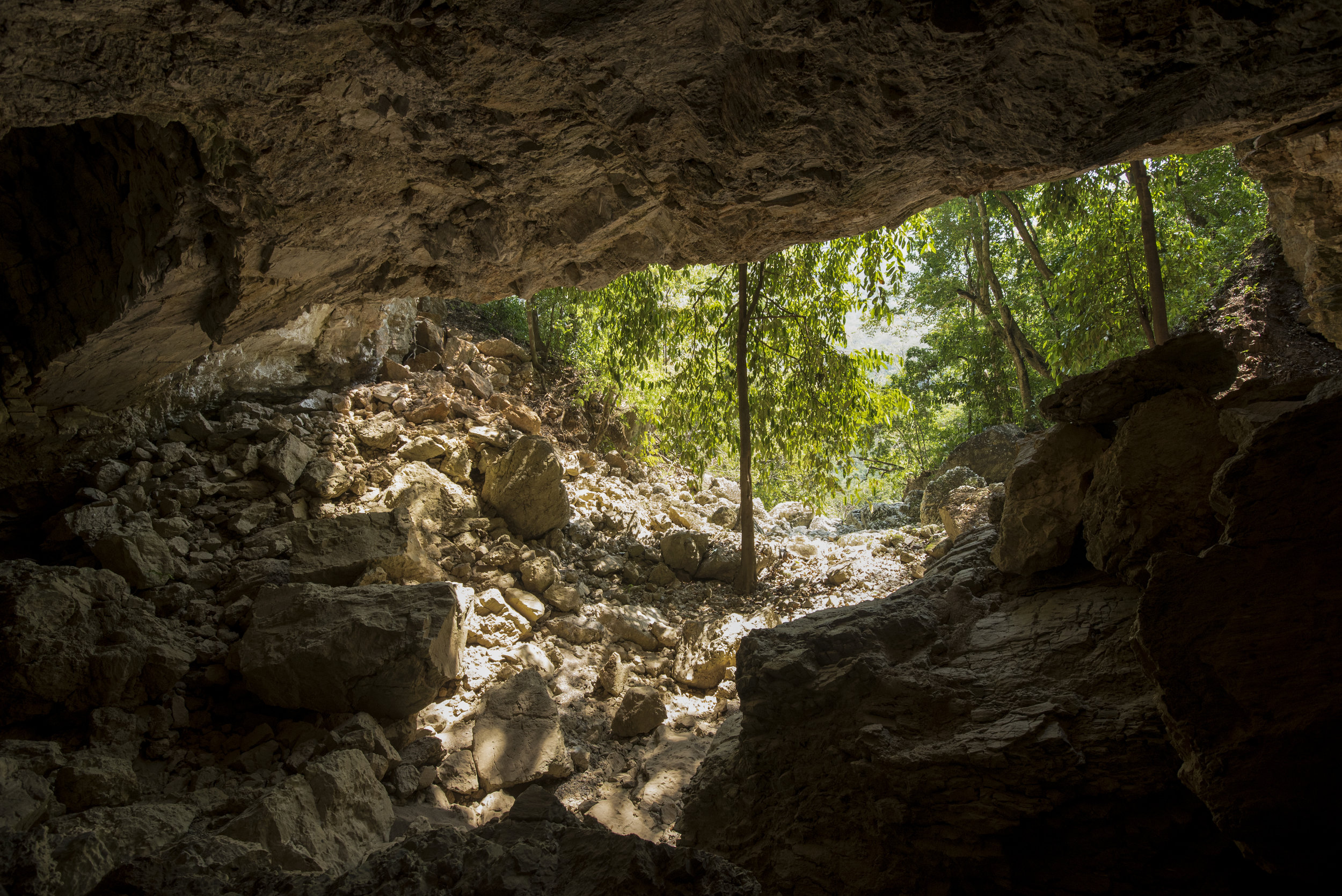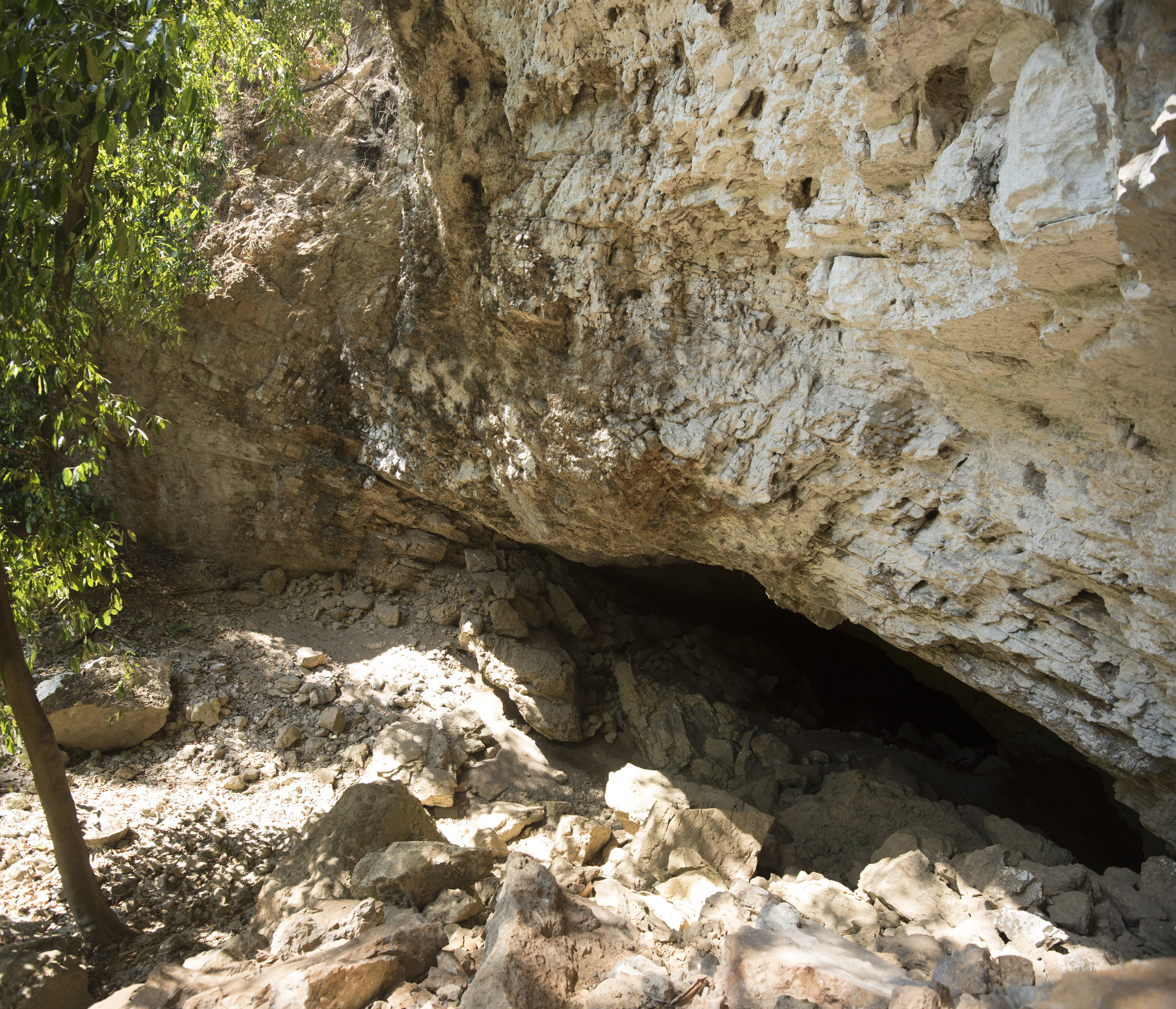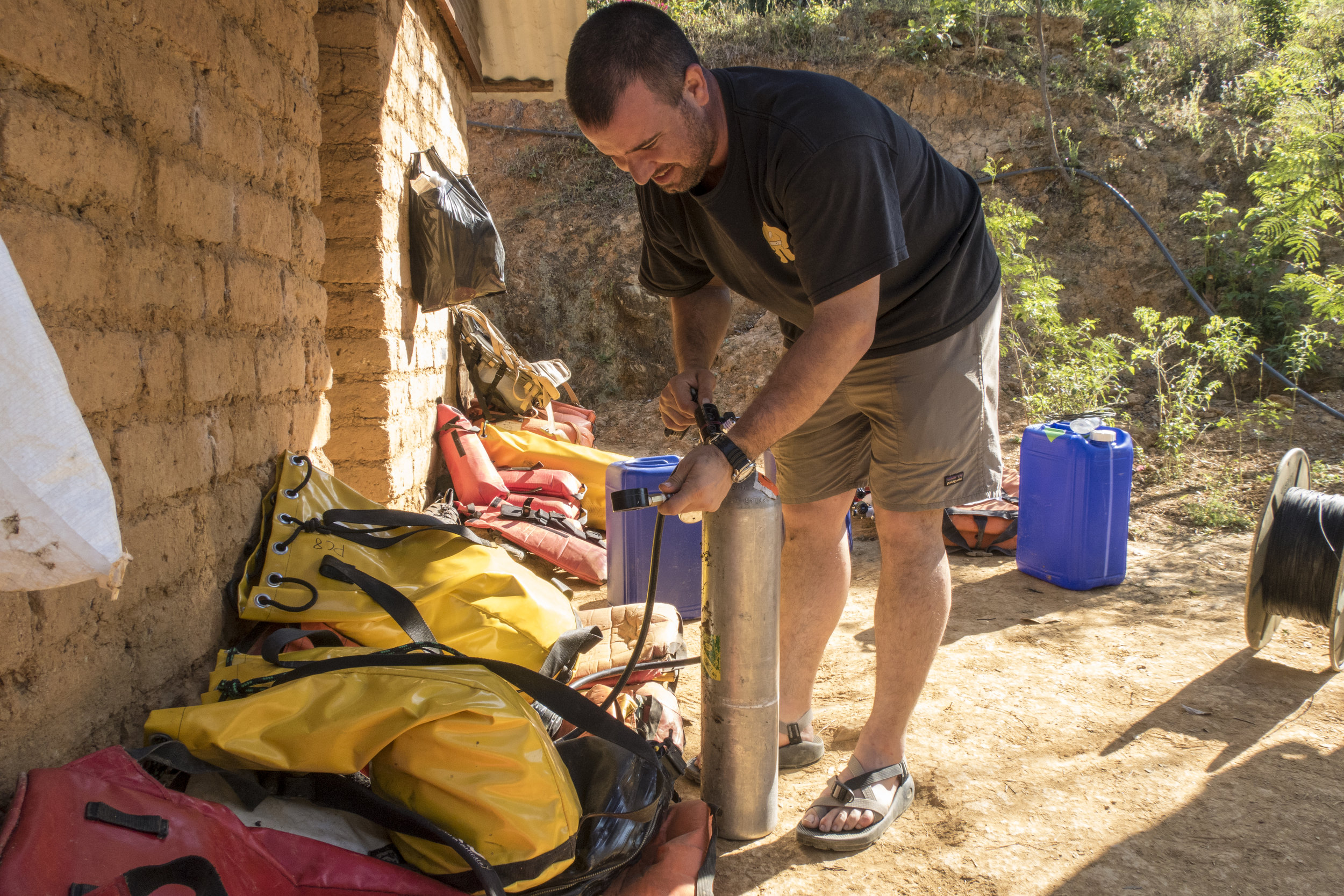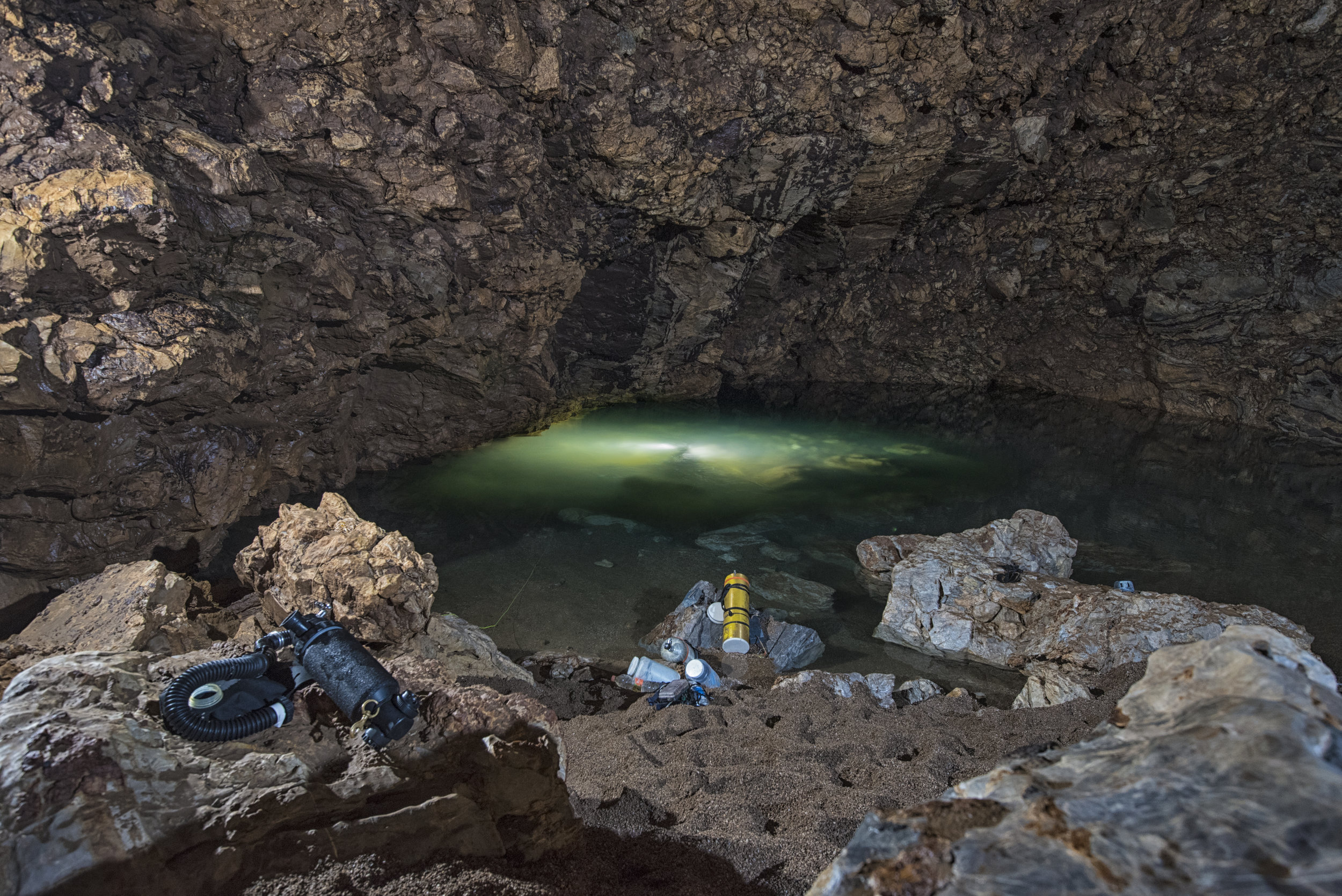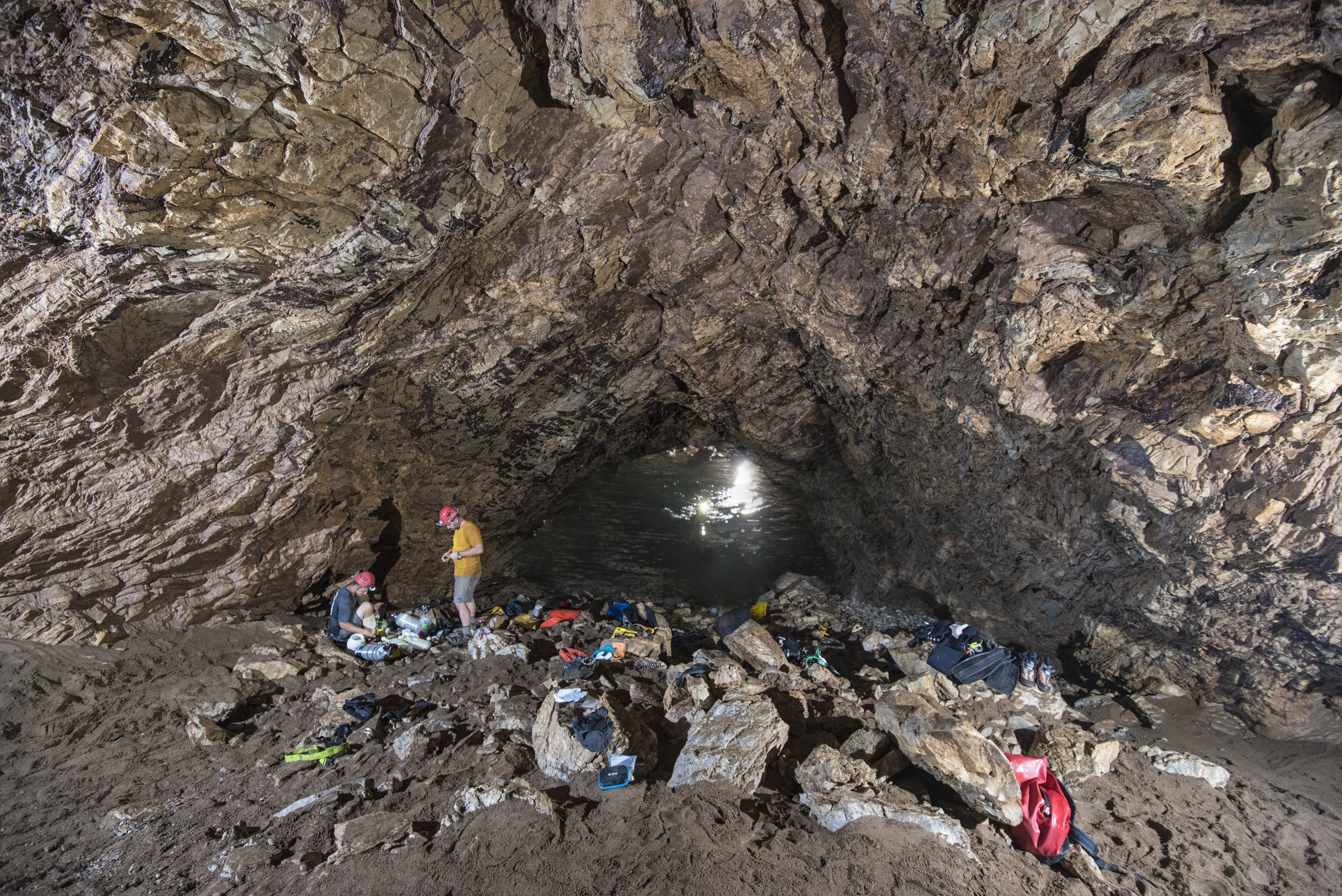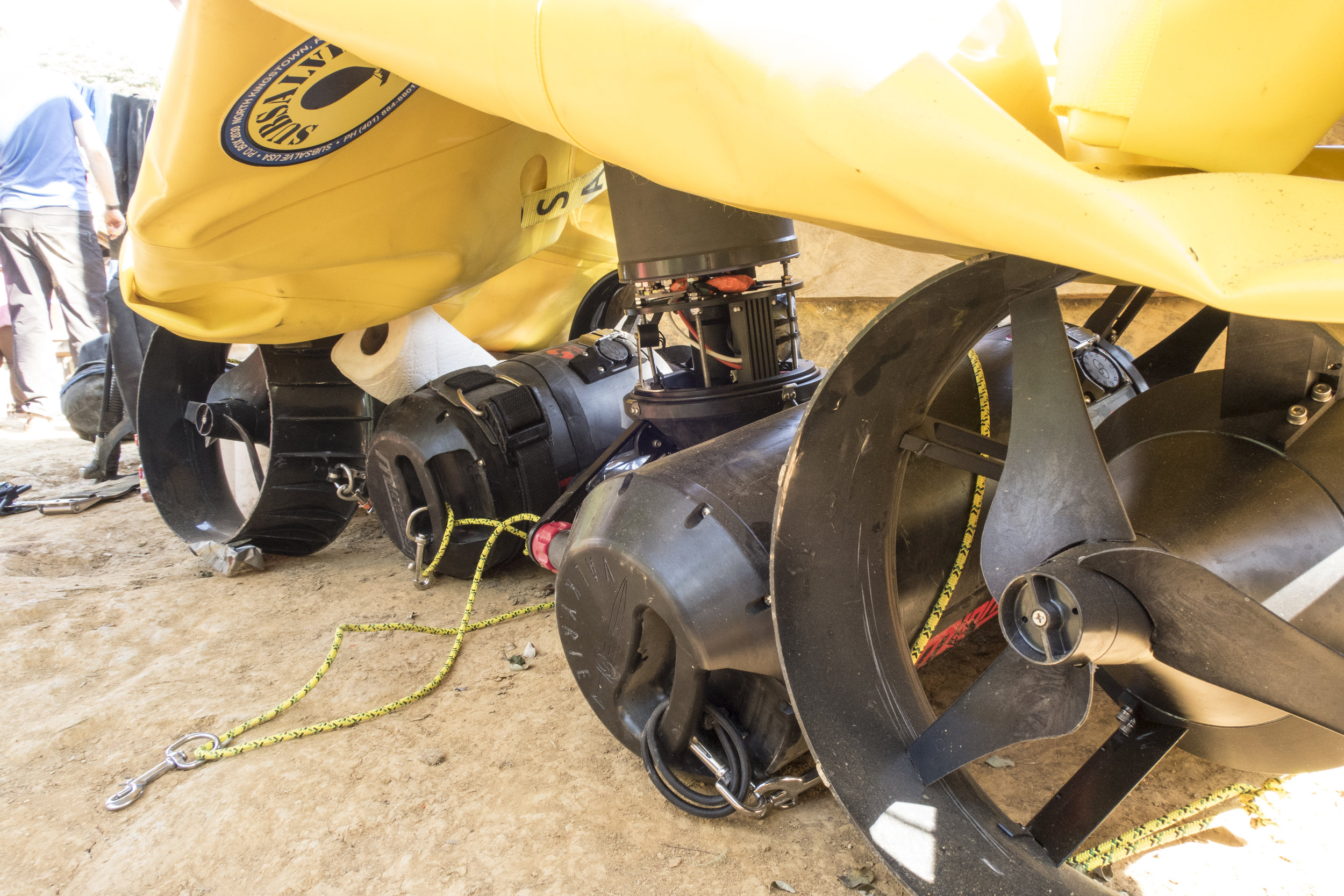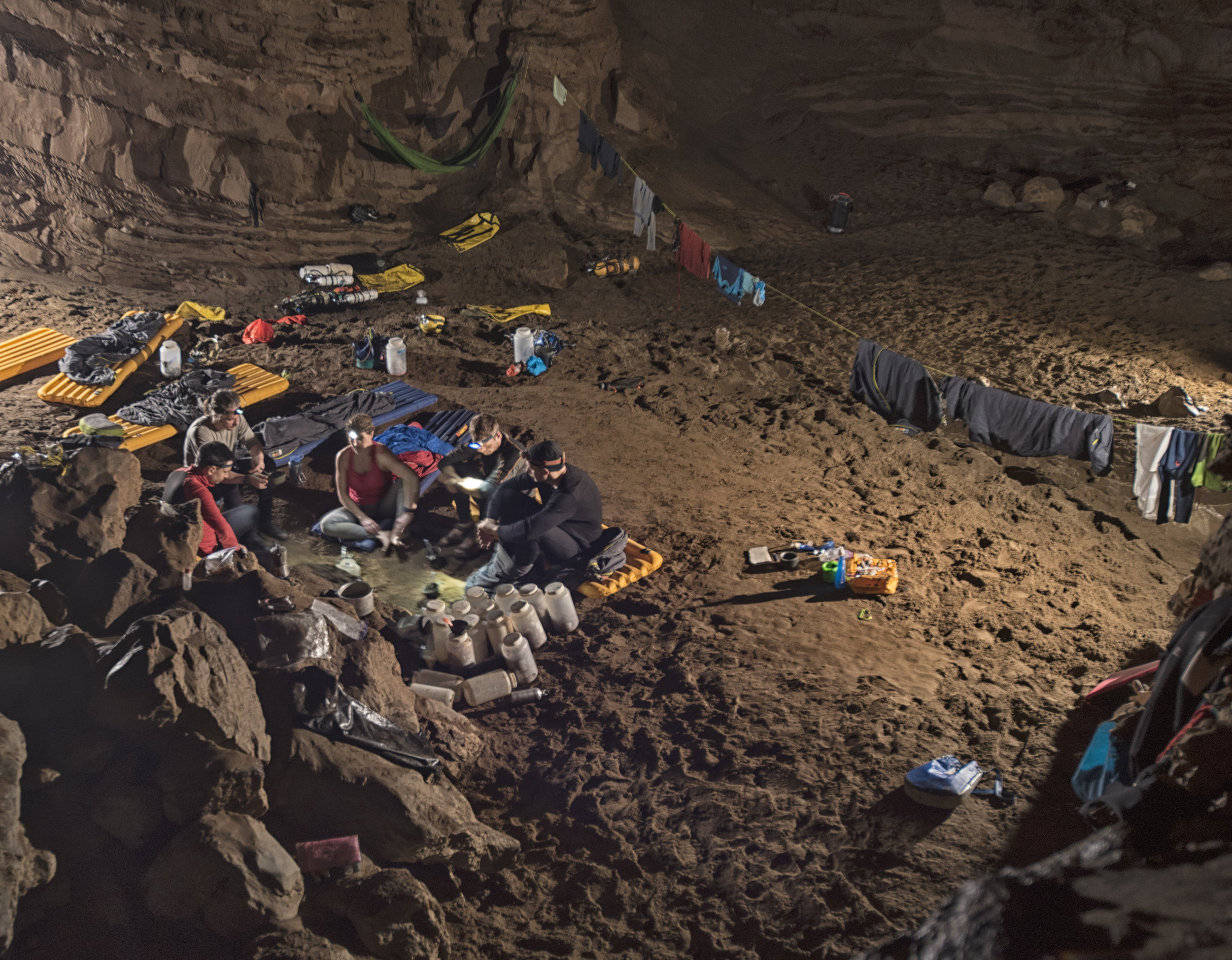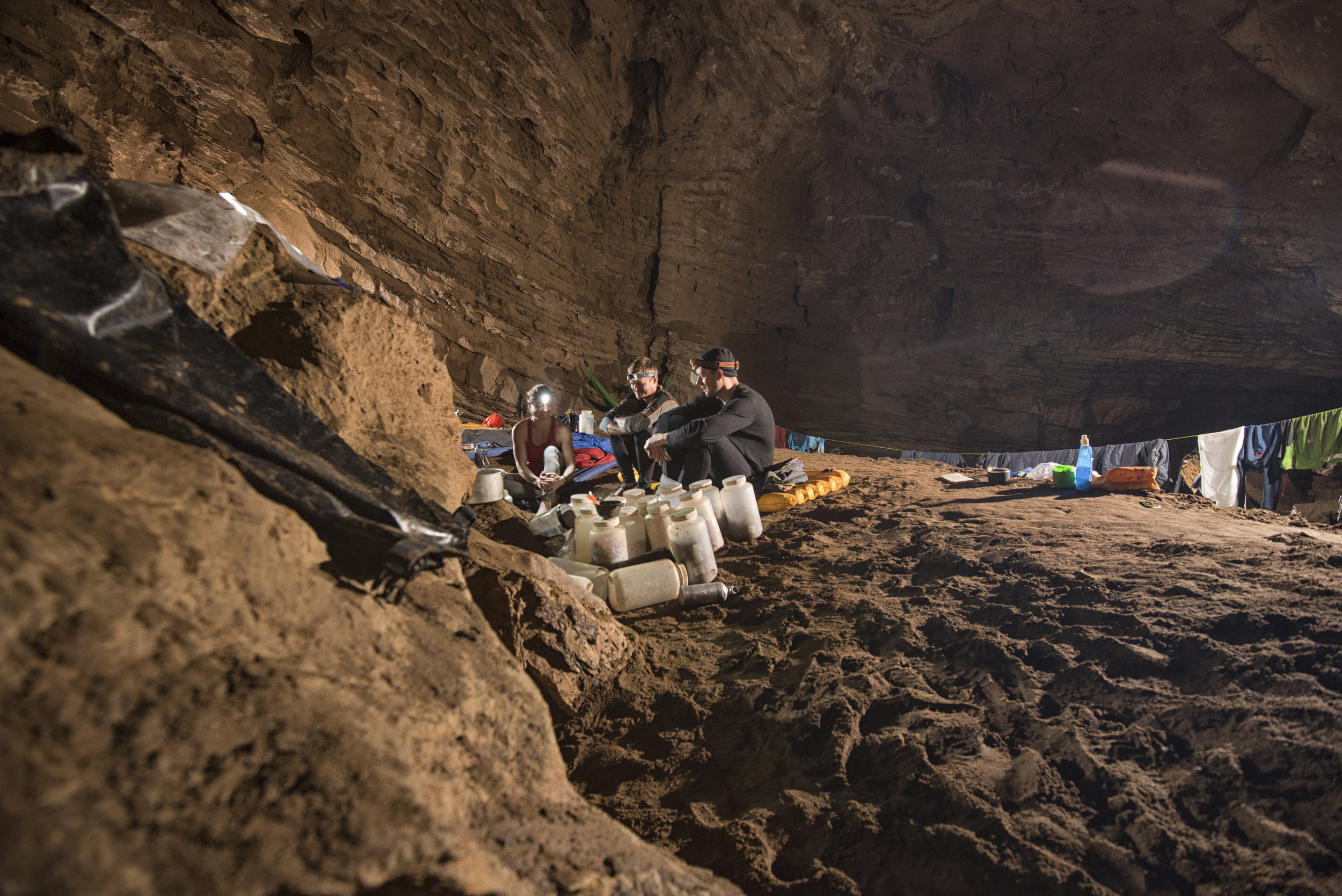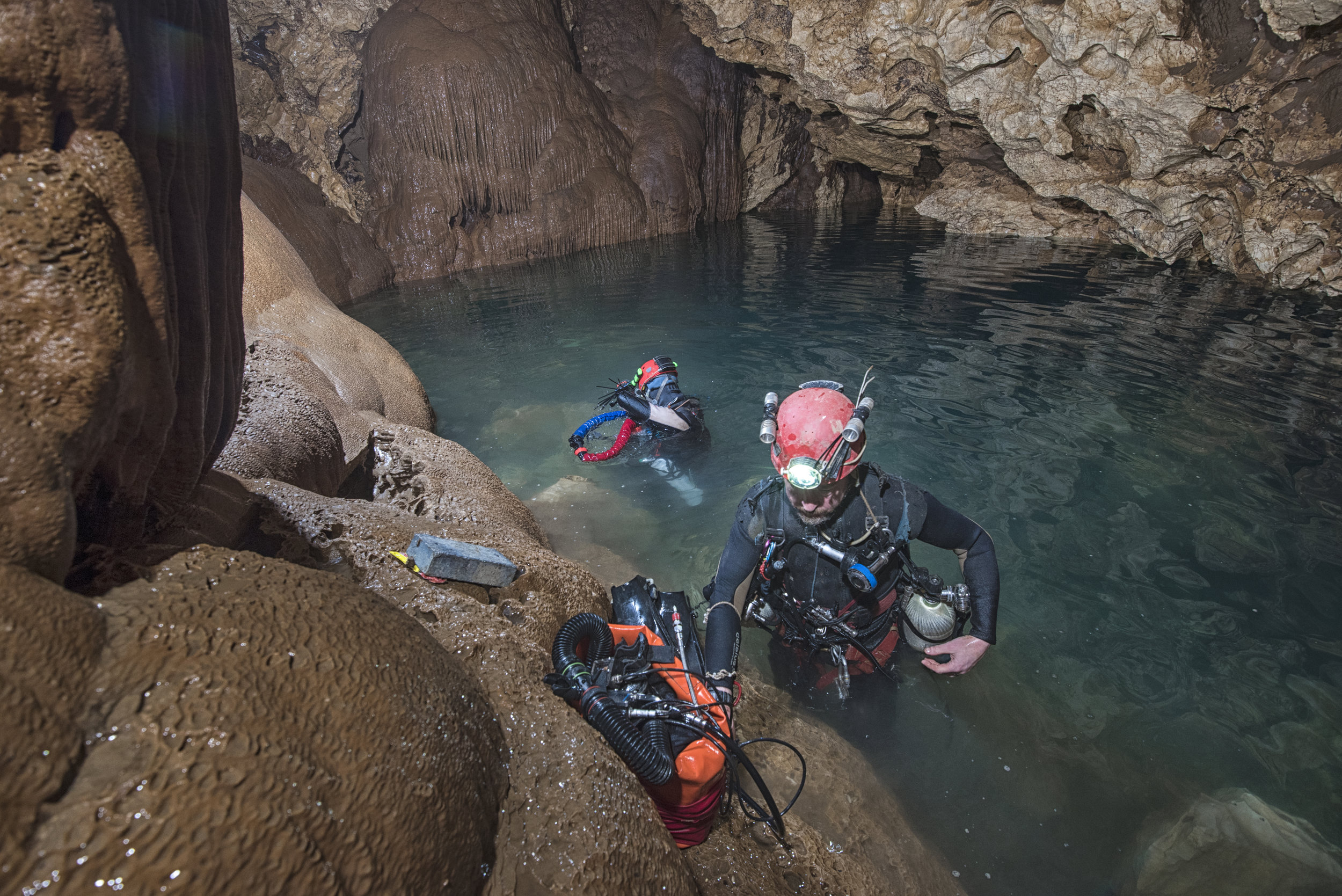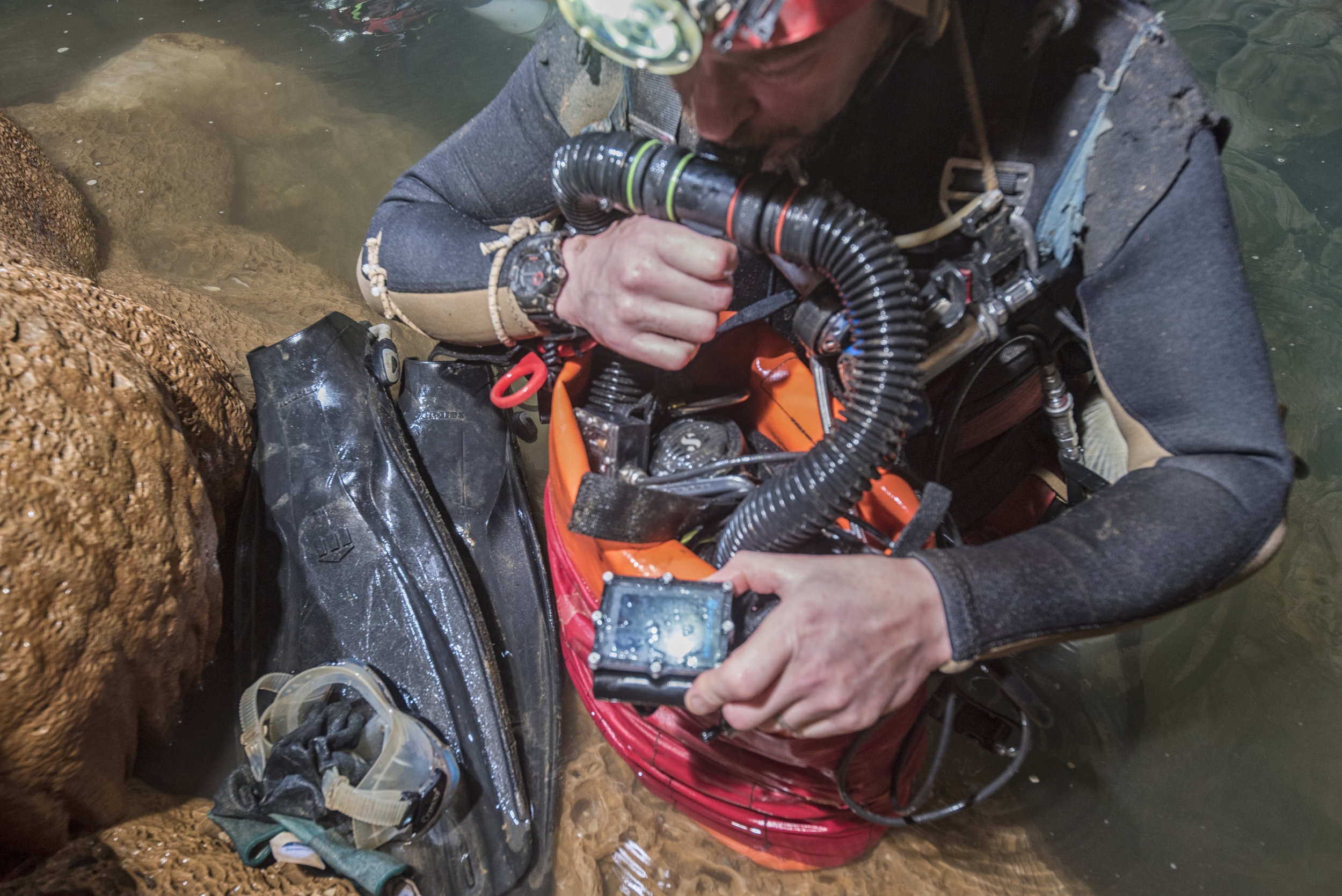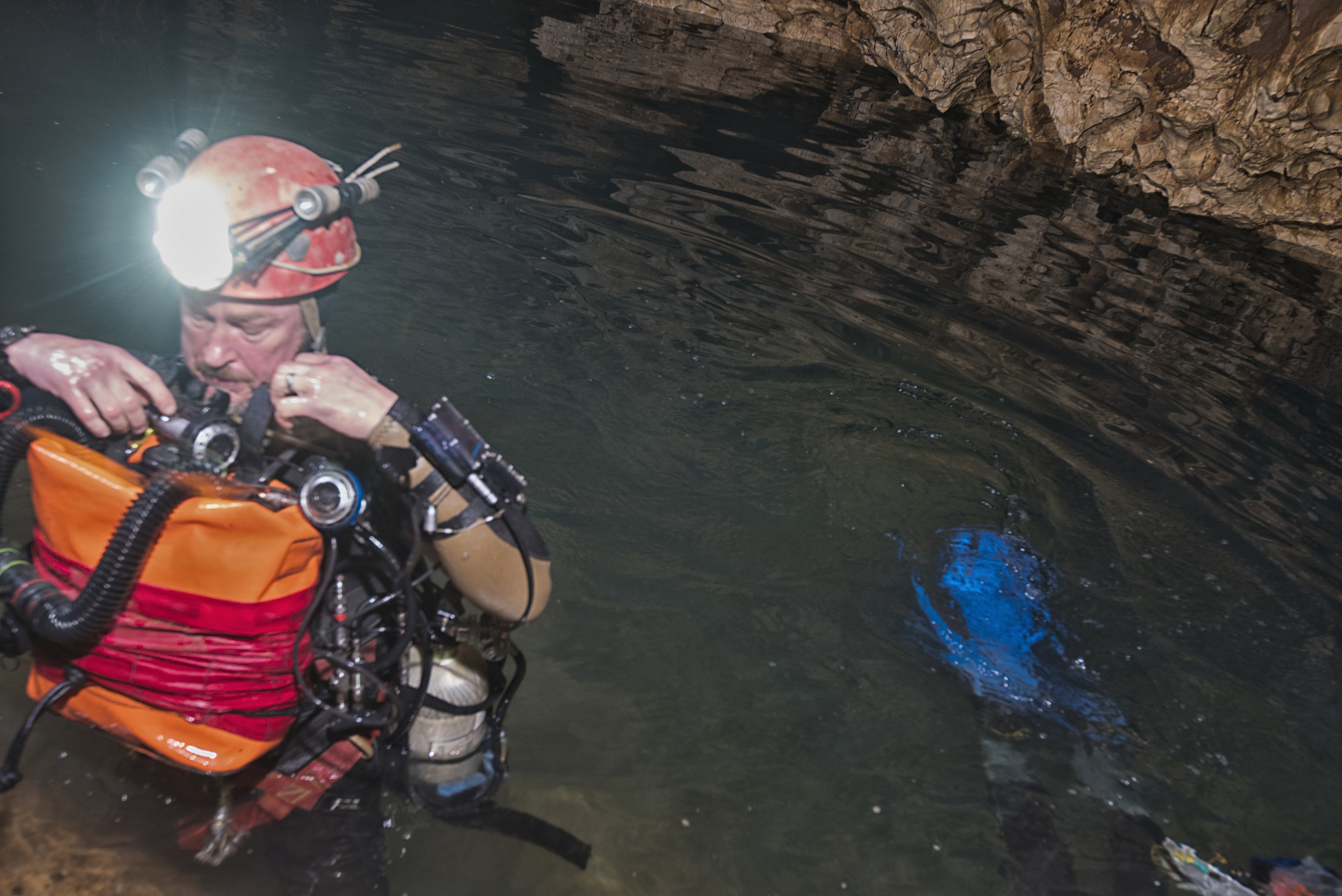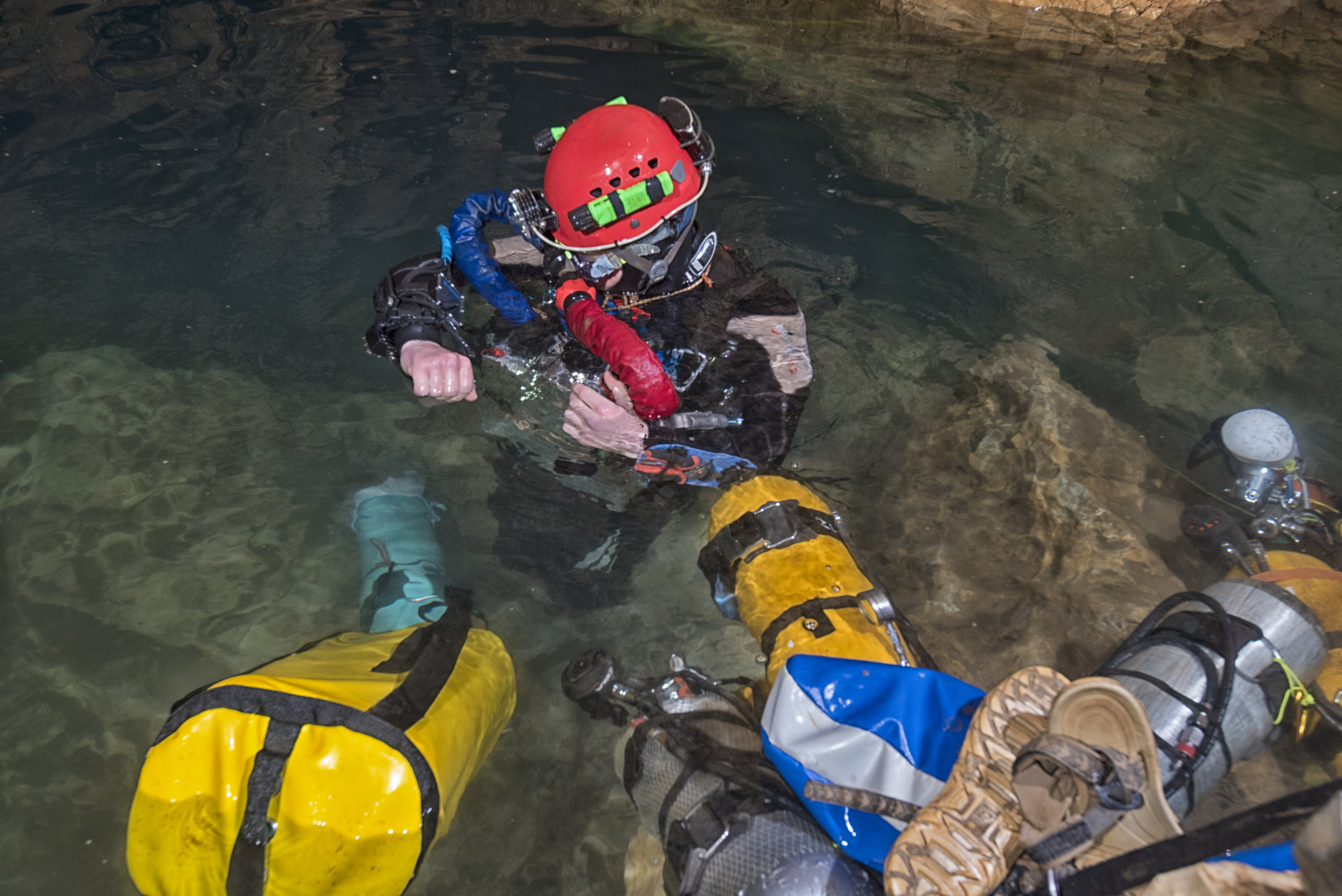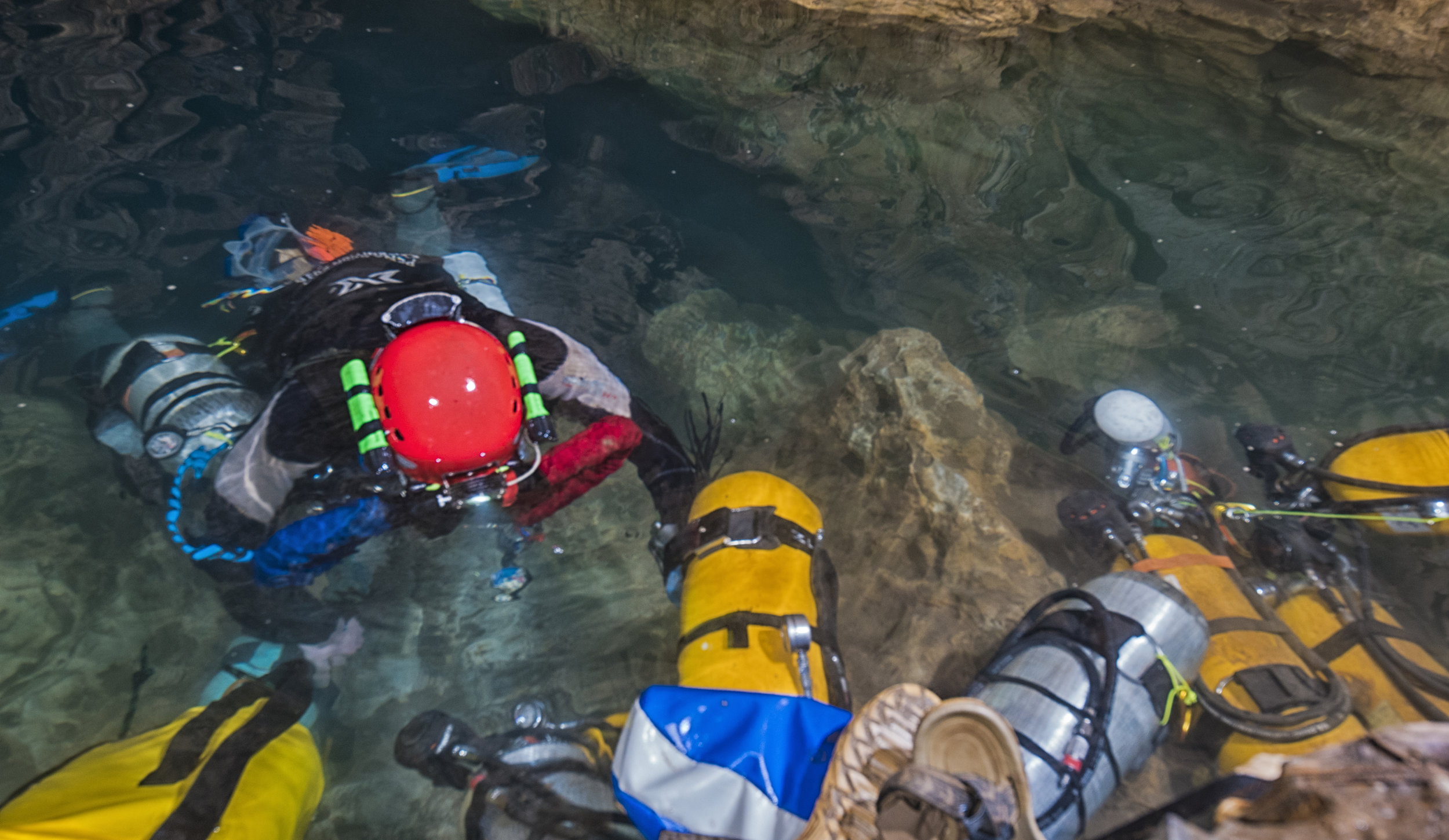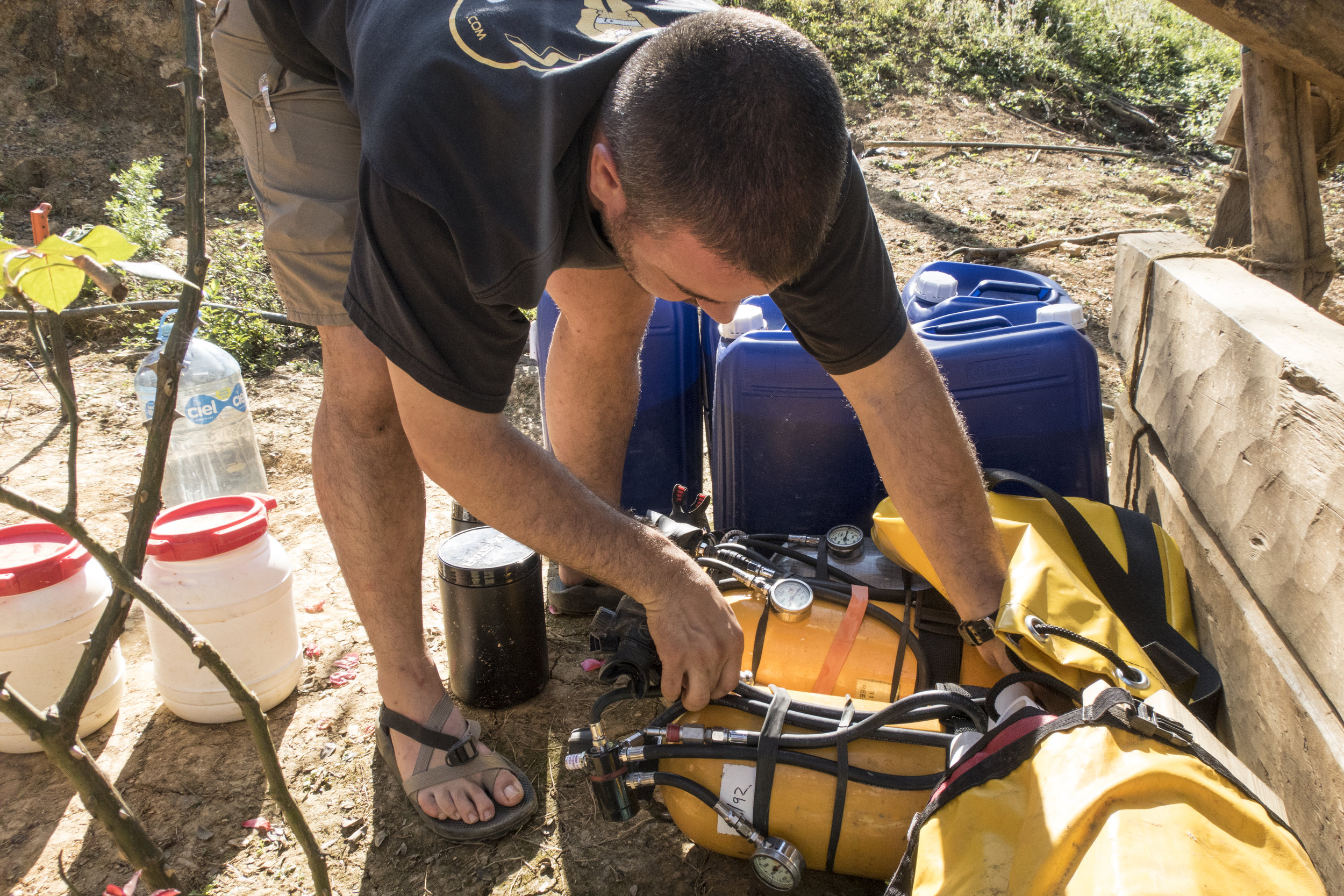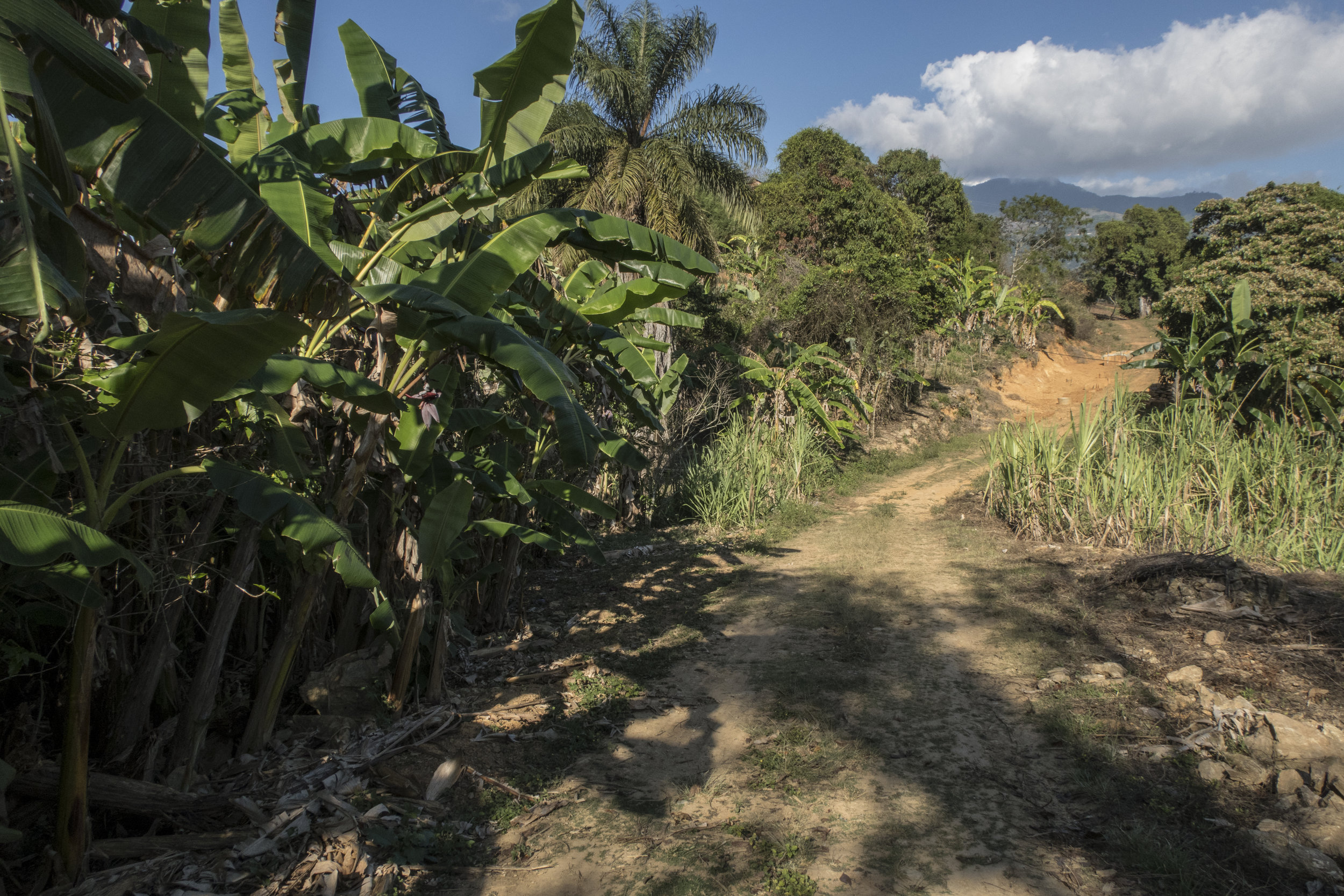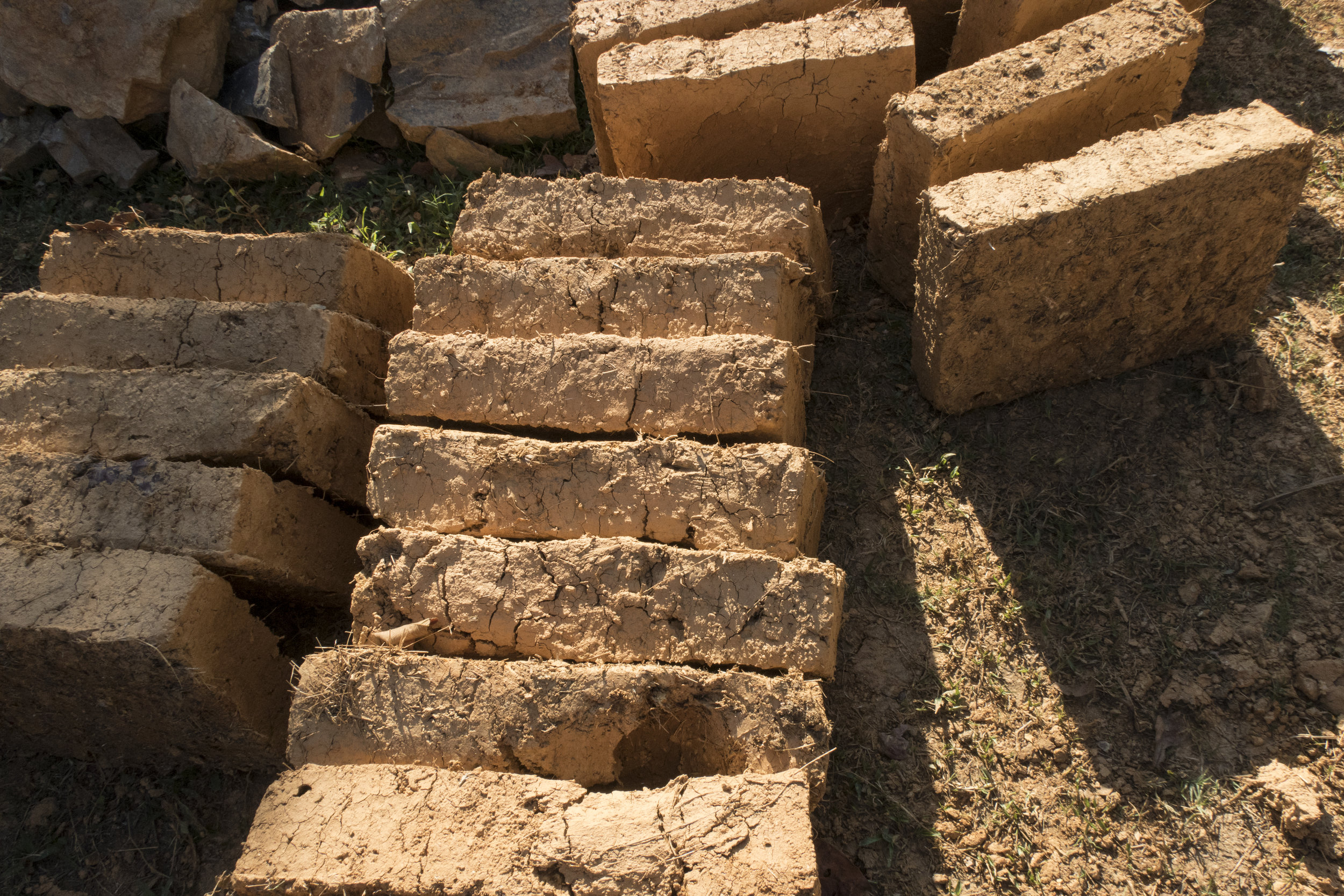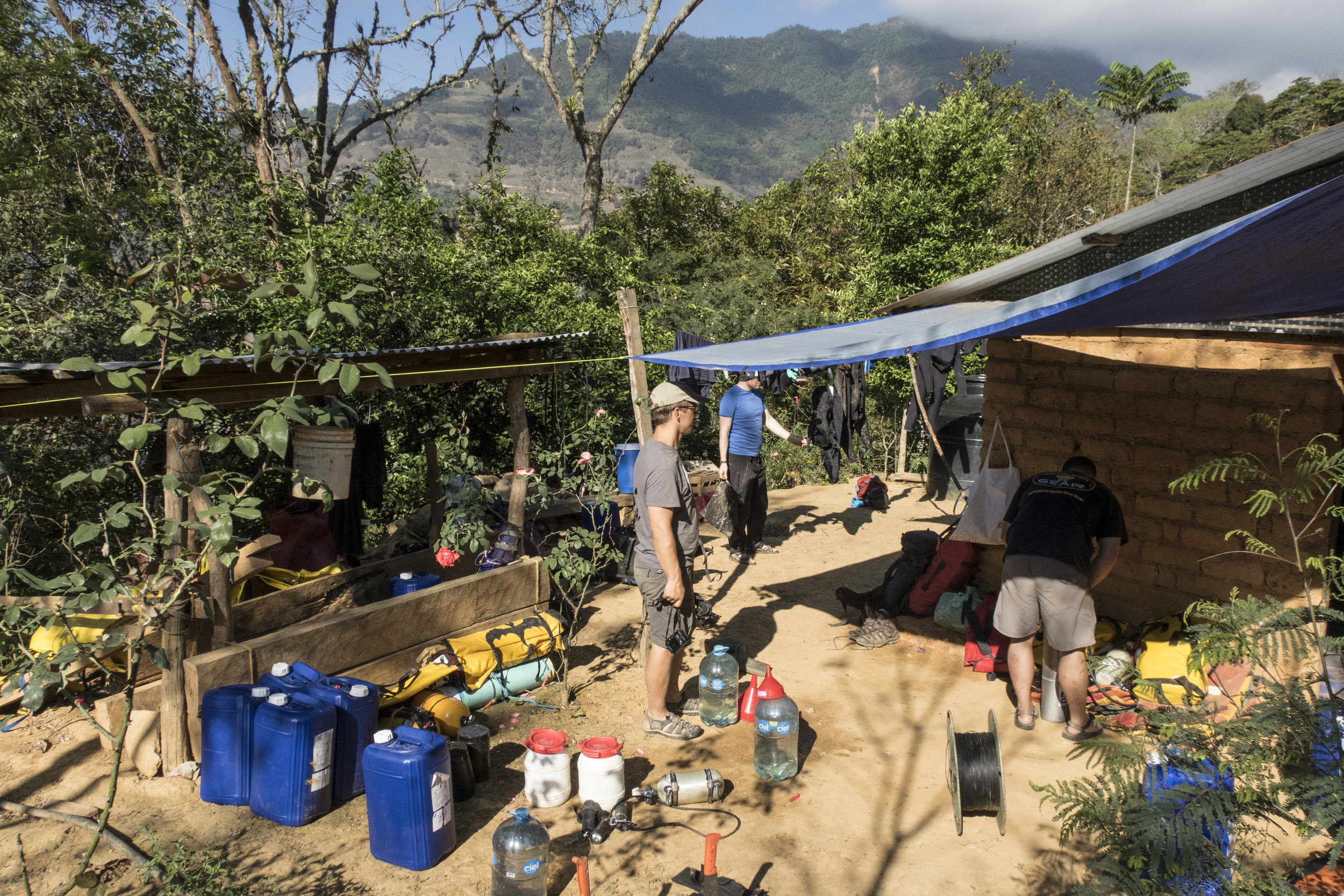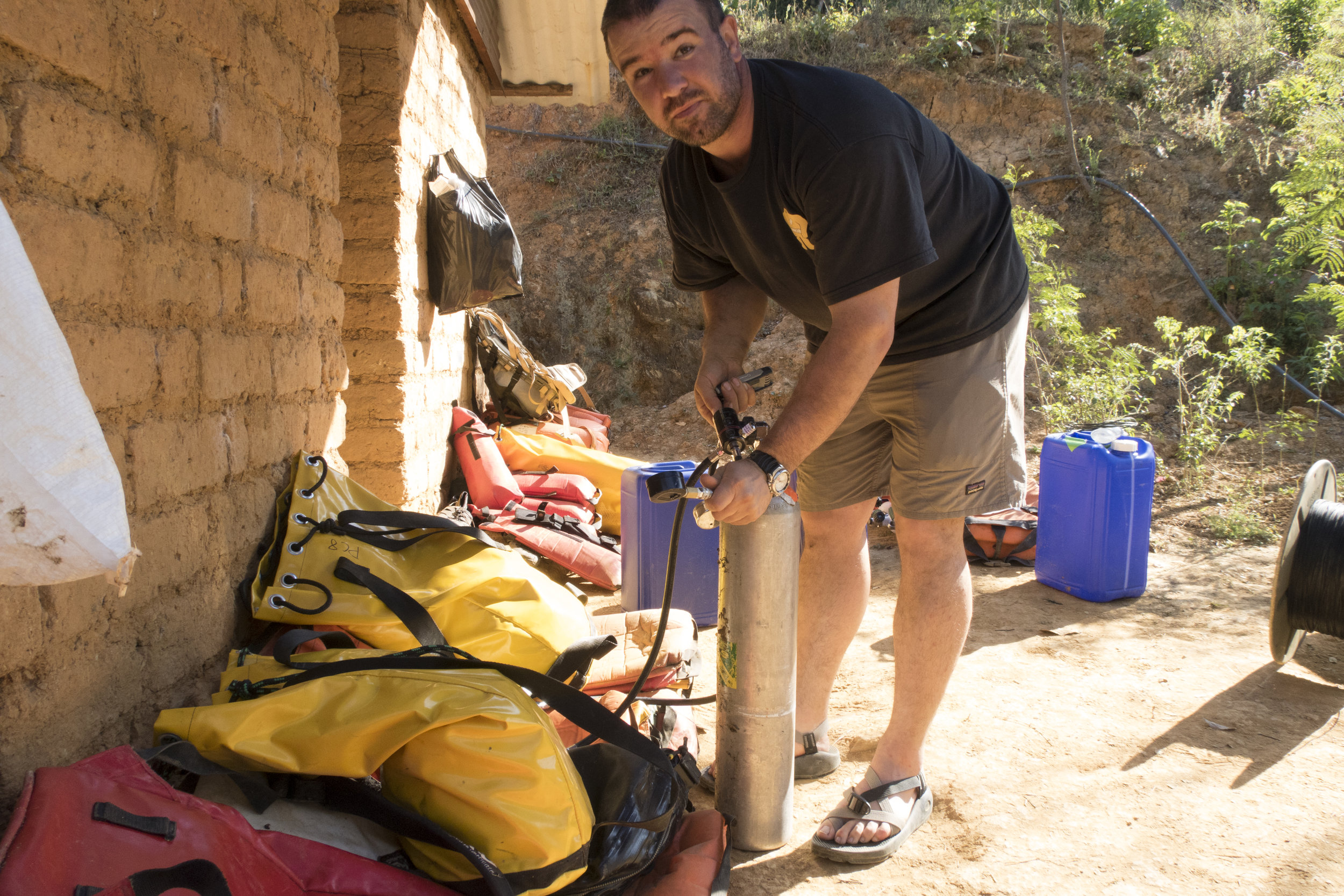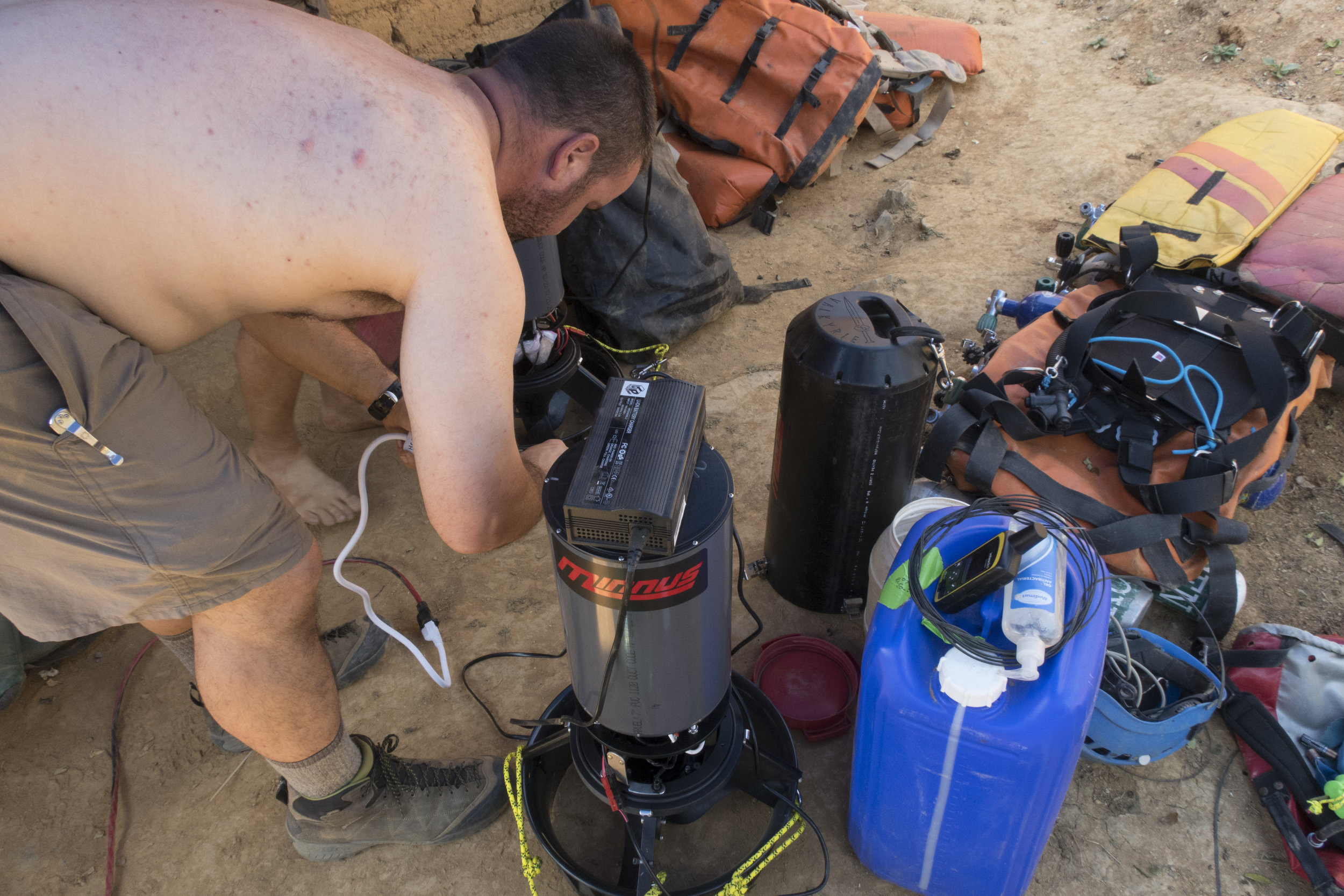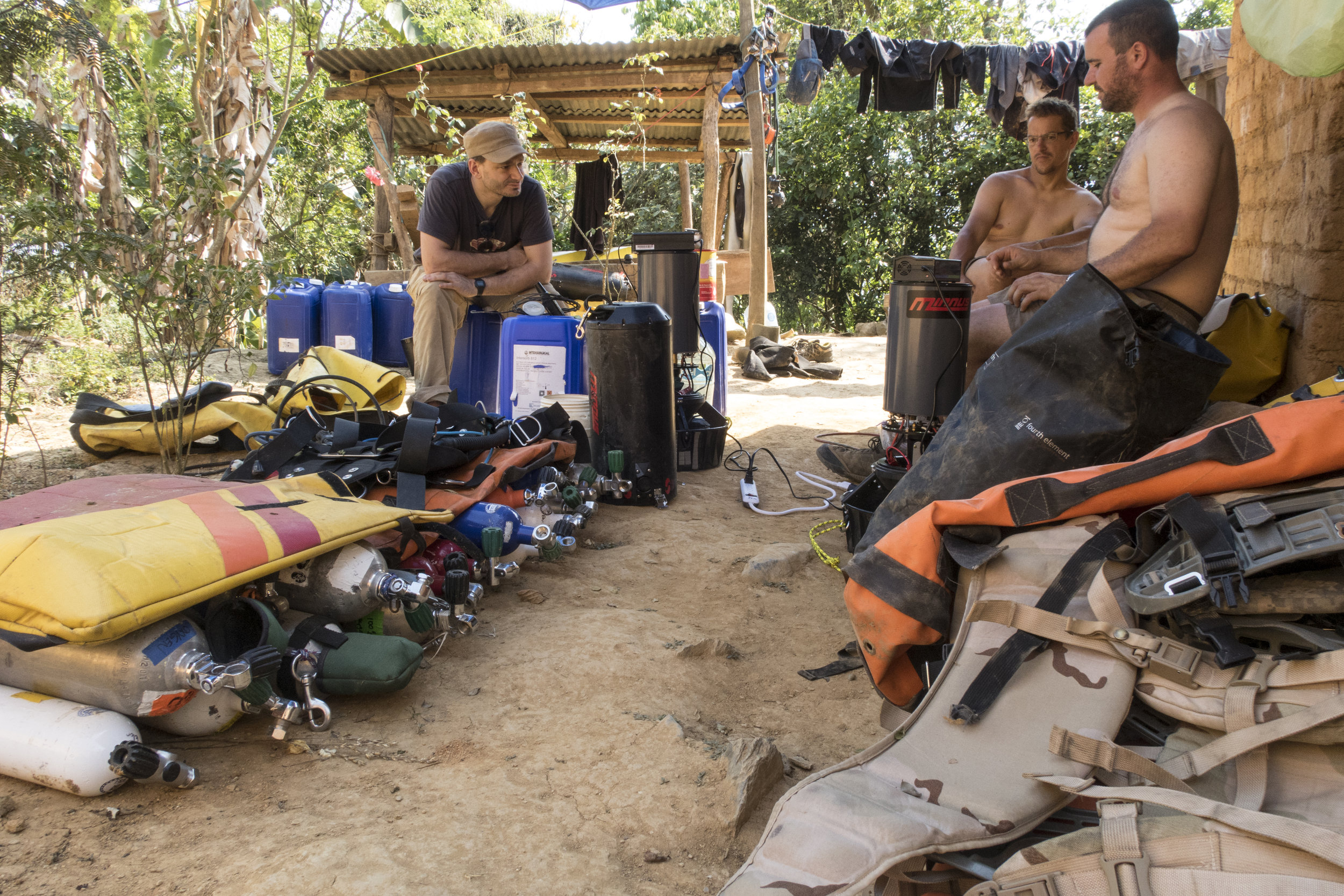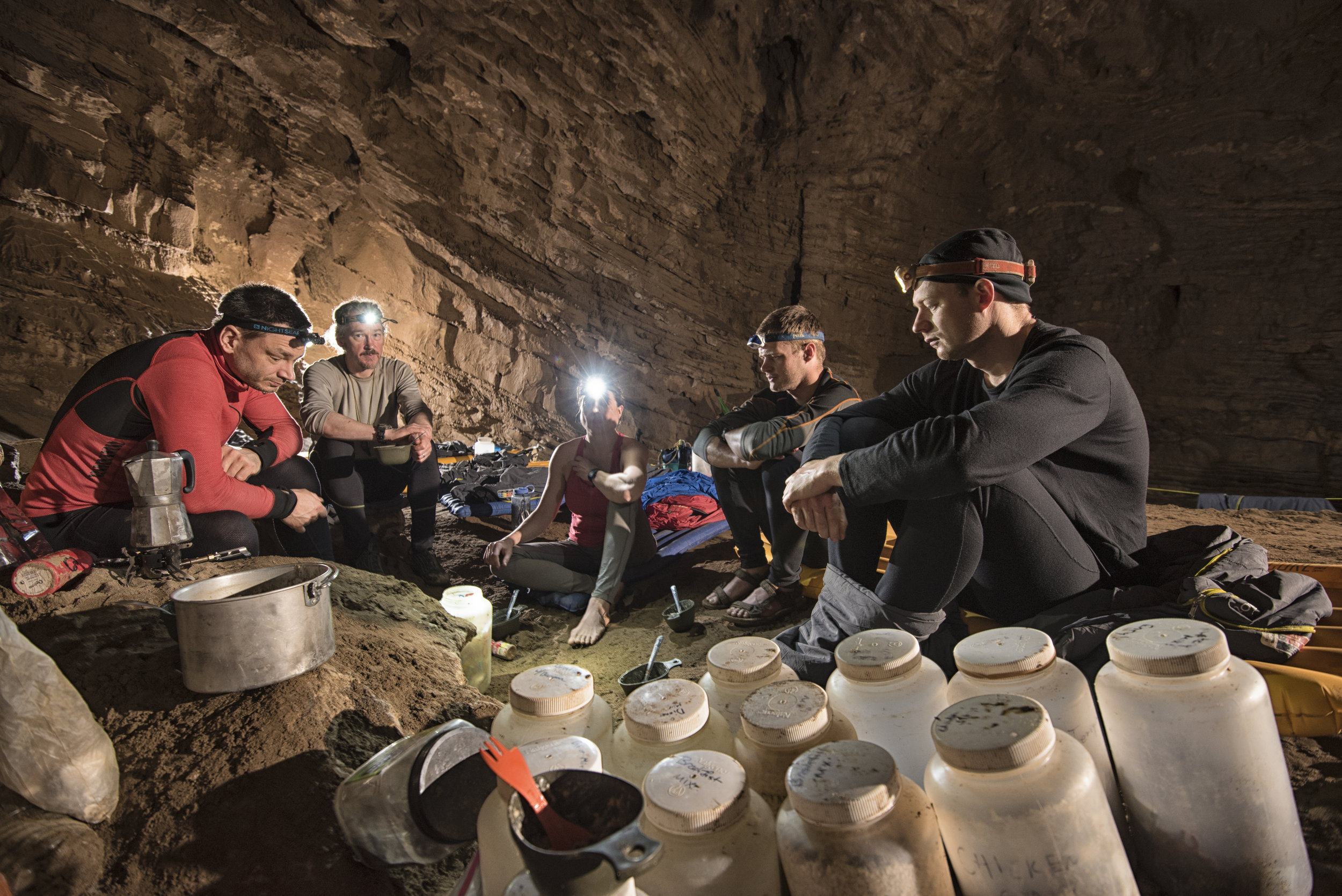In 1984, a team of cave divers led by Dr. Bill Stone of the U.S. Deep Caving Team explored a remote resurgence in the Mexican state of Oaxaca. This world-renowned cave is known as Cueva de la Peña Colorada.
Over three months the 1984 team successfully explored roughly 5km into the mountain, requiring them to tackle several sumps (I.e. water-filled cave passages which can only be explored by cave divers), until they were stopped in Sump VII. This sump quickly reached a depth of over 50m, due to the diving equipment available at the time they quickly hit the logistical limits and was forced to return.
Nevertheless, they reported a large passage continuing north underwater, leading them to believe that this cave might connect to another system high on the mountain. It is known as Sistema Huautla, one of the deepest and most spectacular cave systems on the planet.
Looking down onto Sump 3. Note the flood mark on the opposite wall. Photo by Adam Haydock.
34 years later, during the spring of 2018, an international team of 24 cave explorers returned for a two-month long expedition. Their primary goal, to continue the exploration of Sump VII. This time the group was equipped with state-of-the-art dive gear including rebreathers, scooters and mixed gases. All to allow the continued exploration in Sump VII, towards Sistema Huautla. They would see weeks and weeks of repetitive and challenging gear hauling just to allow exploration be to continued. 34 years since the last team had departed, divers set off to attempt to extend the known end of the system. Sadly the dream of discovering kilometres of cave passage was not to be, a mere 20 meters beyond the 1984 limit an impenetrable boulder breakdown was discovered.
The dive platform at Sump 7. Photo by Chris Jewell.
Despite the teams best efforts no way on could be located. However, they did spot several key indicators, fine silt and little flow. Due to both of these discoveries, it is unlikely that this cave is part of the active flow in Sistema Huautla. Instead, it is more possible that the vast amounts of water that flows through the cave every year are caused by percolation from the Peña Colorada Canyon located about 100 meters above.
This hypothesis was further cemented towards the end of the expedition when large storms caused flash flooding in the canyon, triggering water levels to rise rapidly within the cave. This sudden flooding led to 6 of the team members fleeing the rising water levels to a known dry area in the cave, the Whacking Great Chamber. They were forced to wait for 69 hours in their wetsuits, cut off from their camp without food, sleeping gear and with no communications to the surface. Finally, the water levels dropped enough to allow their retreat, happily all cavers escaped without injury. The same could not be said for the camping gear, as most of it was never to be seen again.
Further reading:
Haydock, A., 2018, Cave divers trapped for 69 hours. DIVE Magazine [web link]
Haydock, A., 2018, Trapped beneath the Earth. Geographical Magazine [web link]
Klocker, A., 2018, The Return to the Cueva de la Peña Colorada. WILD Magazine [web link]
Klocker, A., 2018, Cueava de la Peña Colorada. Sidetracked Magazine [web link]
Klocker, A., 2018, Trapped in one of the world's deepest caves. Ockham’s Razor [web link]


